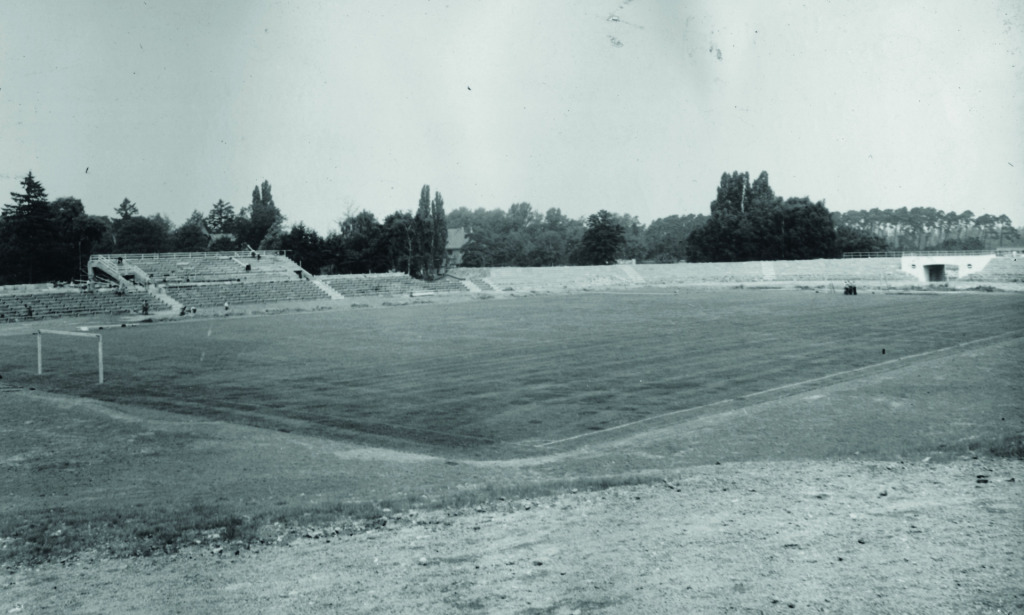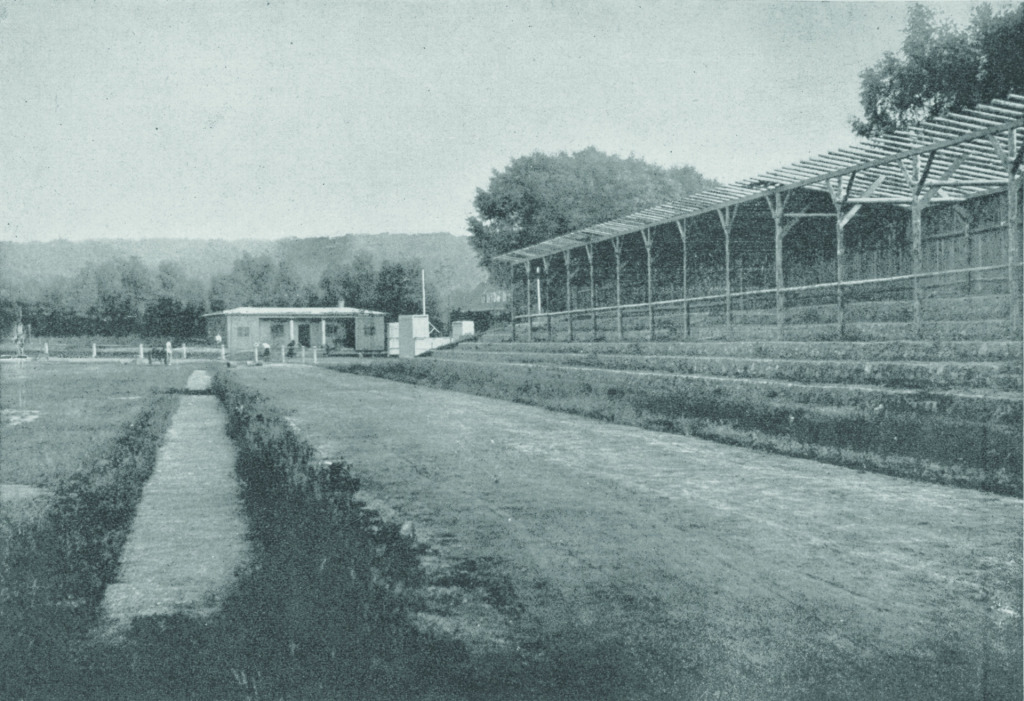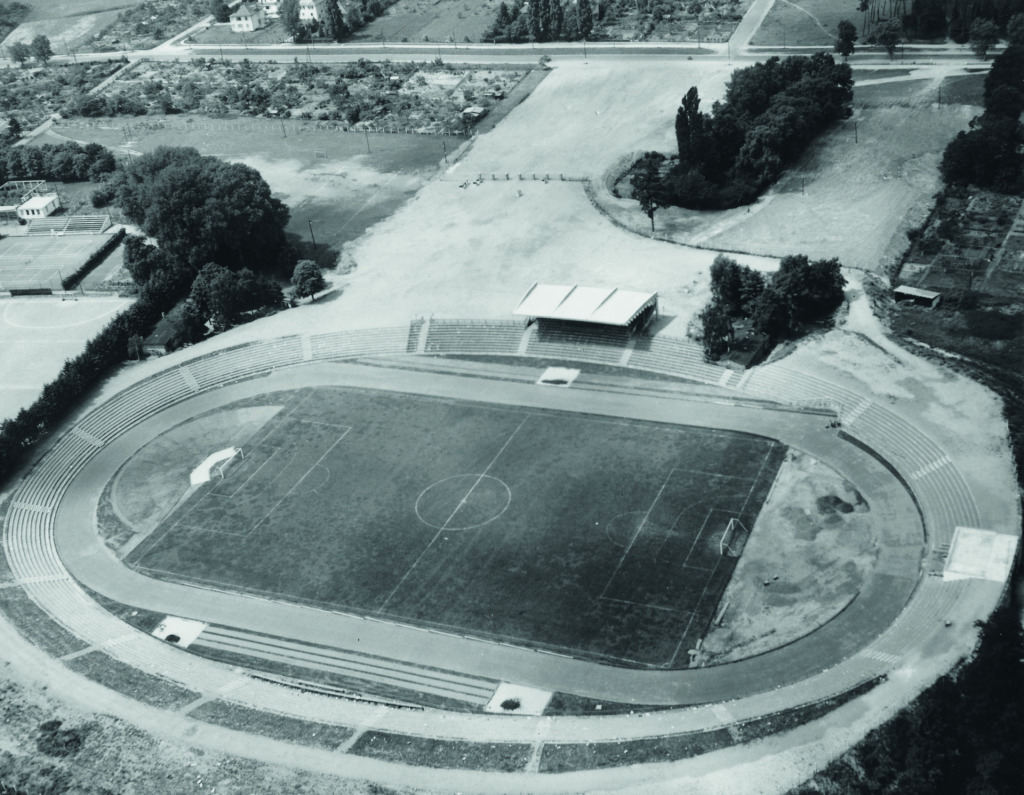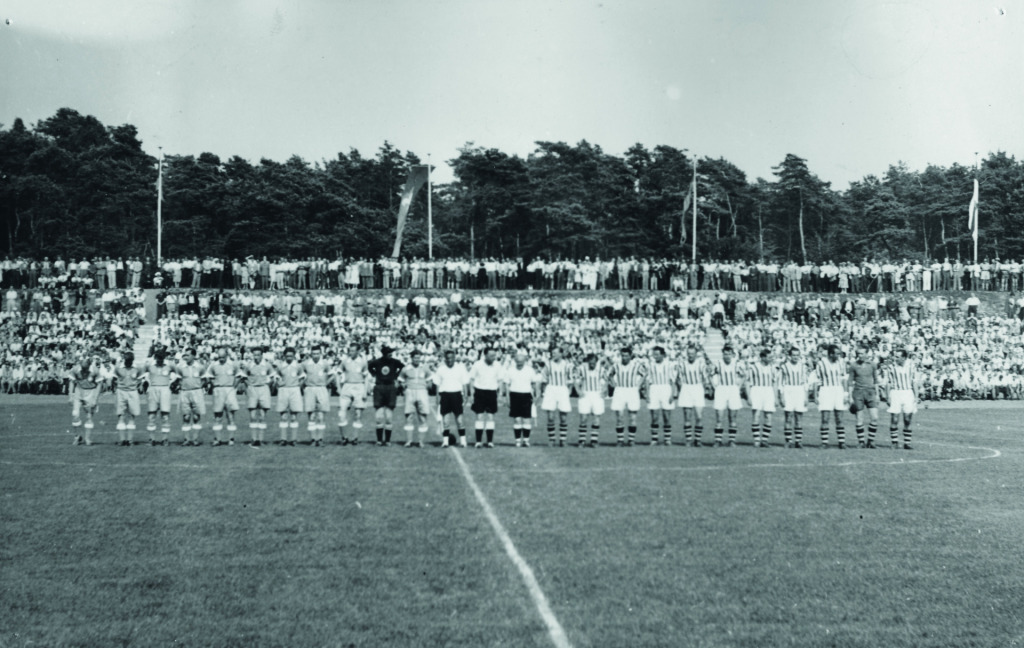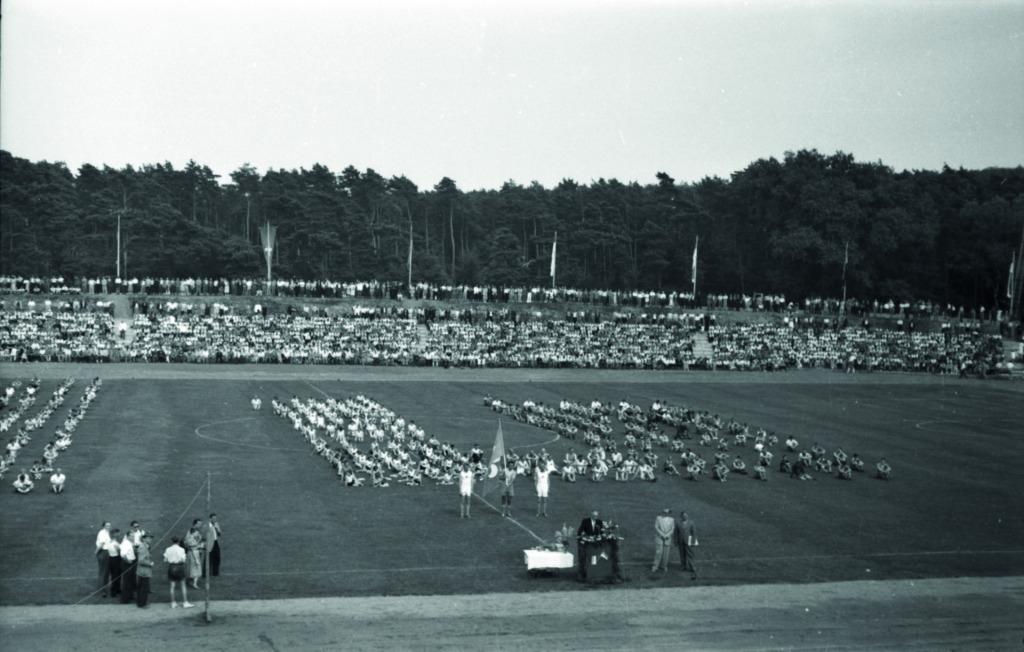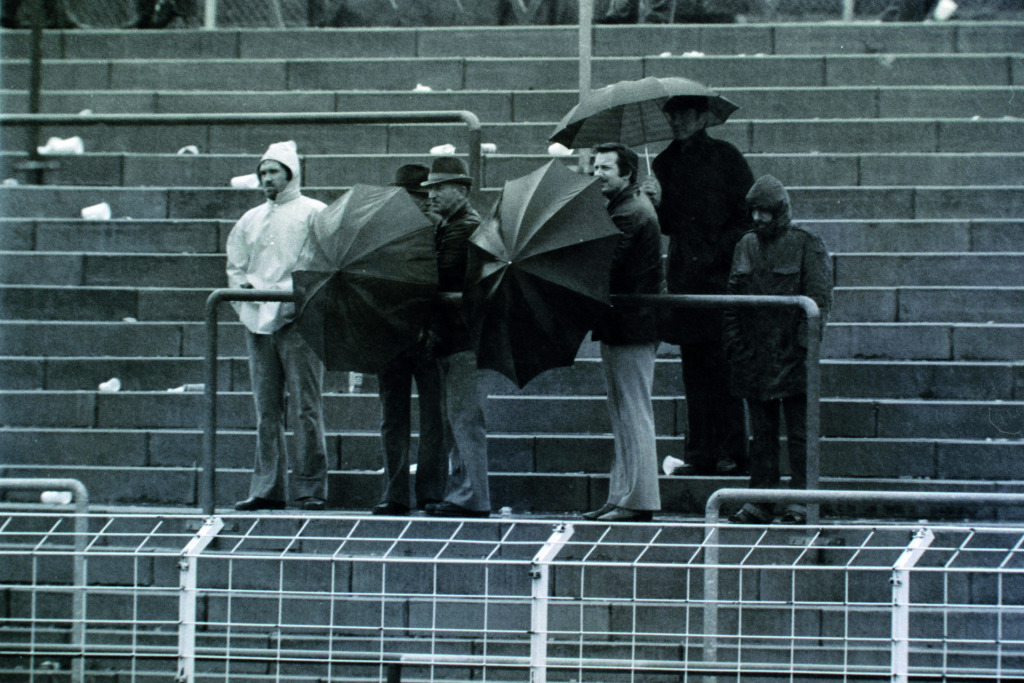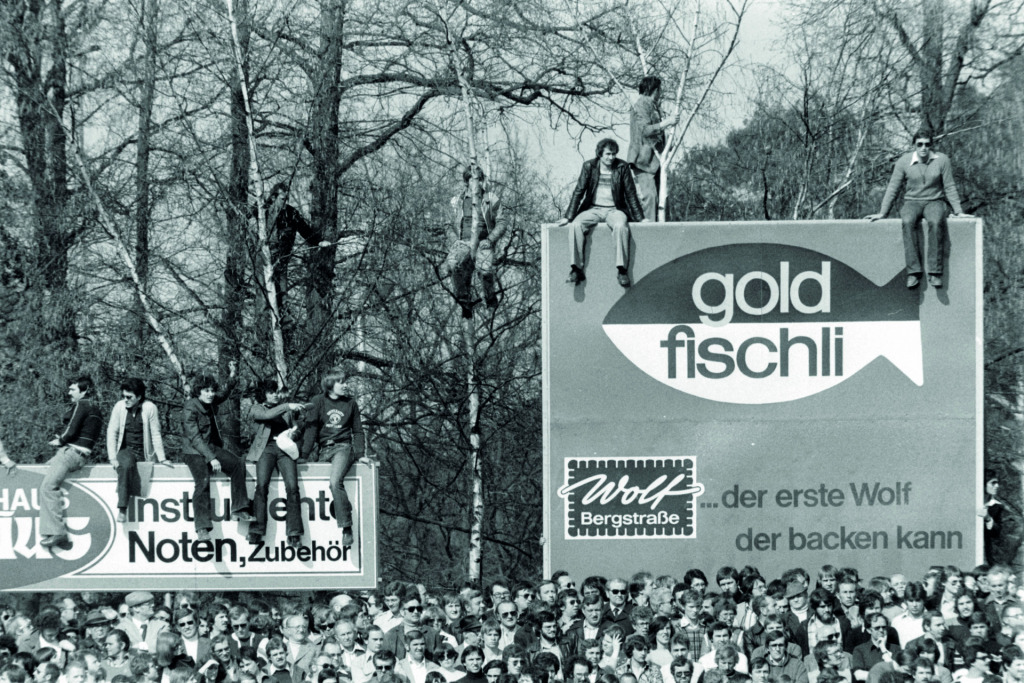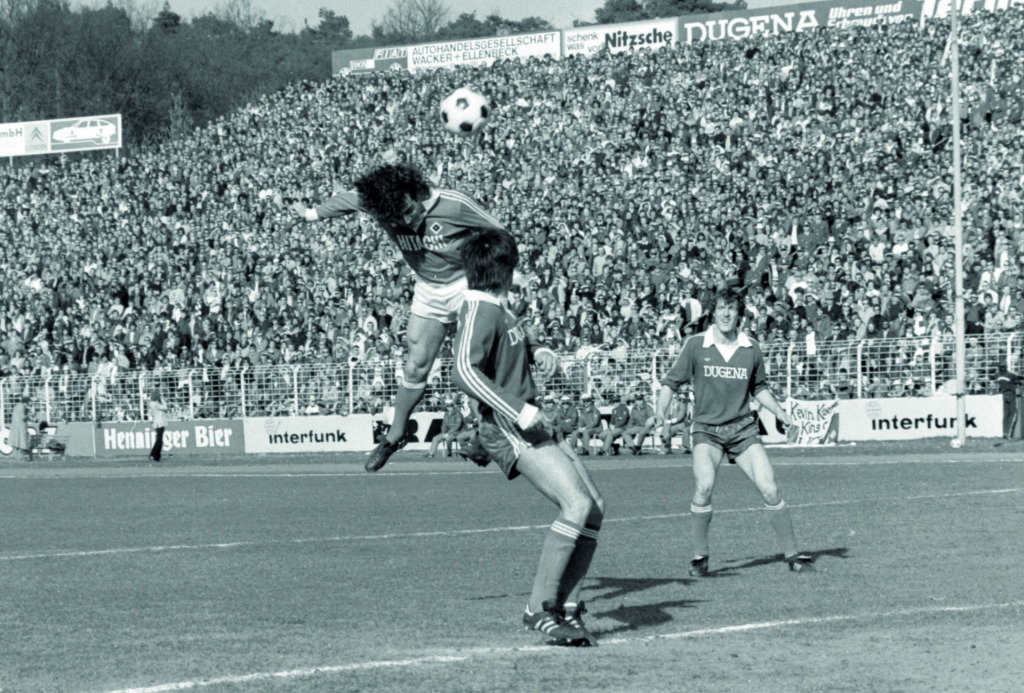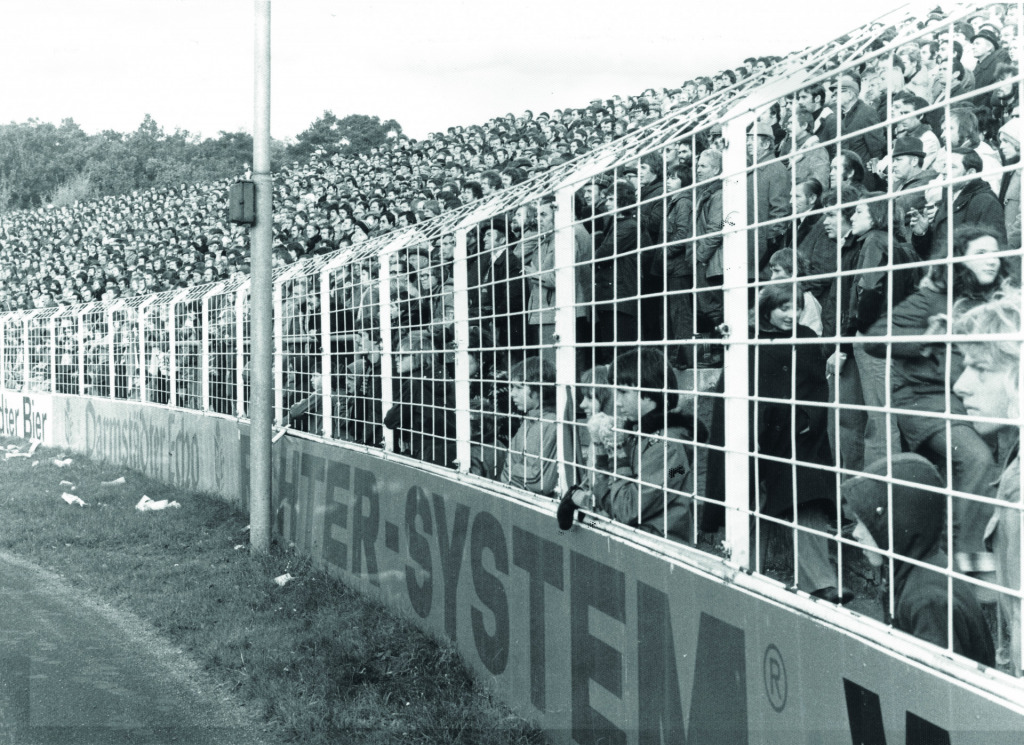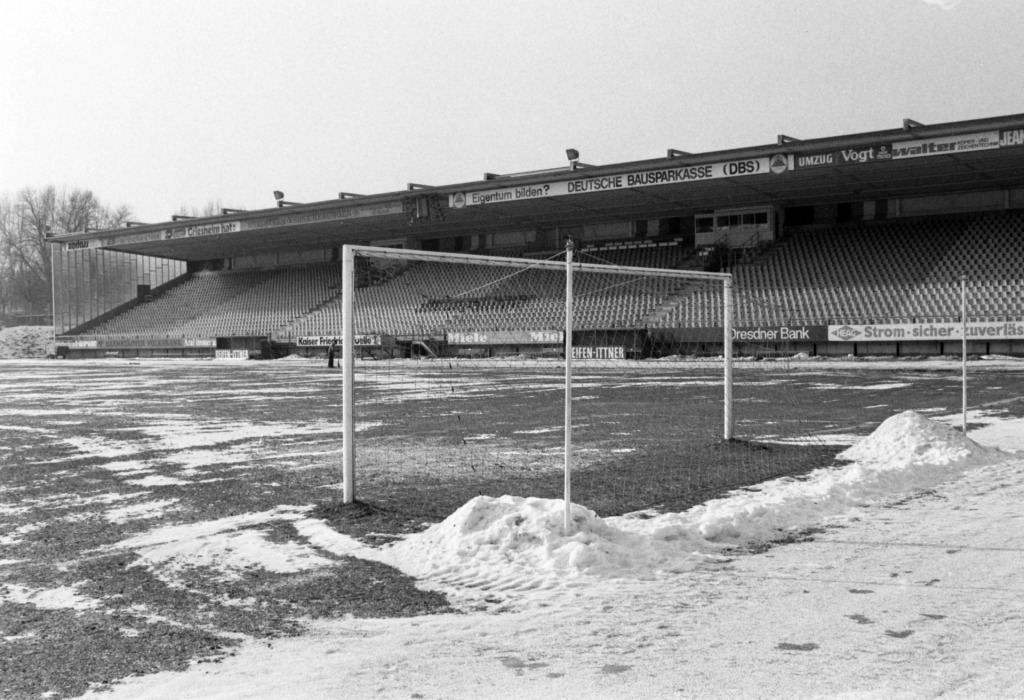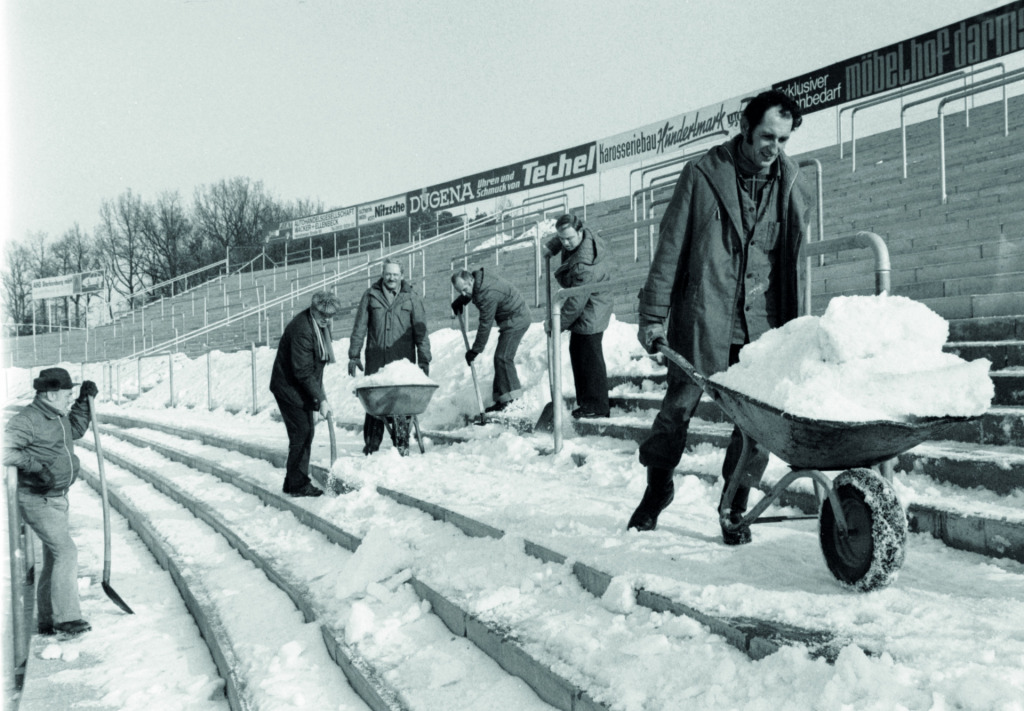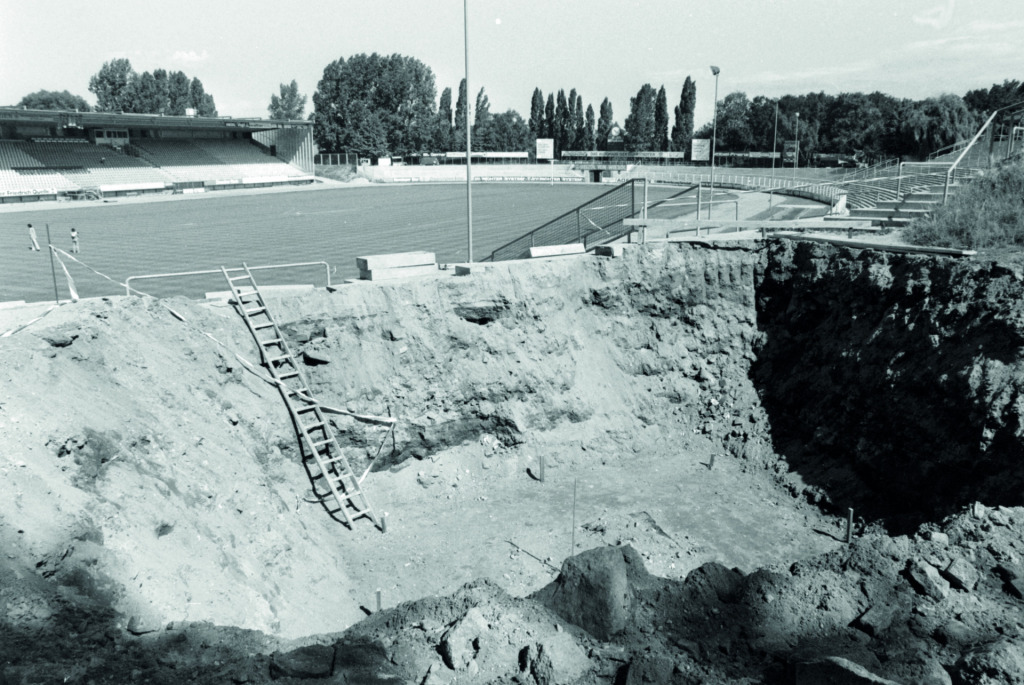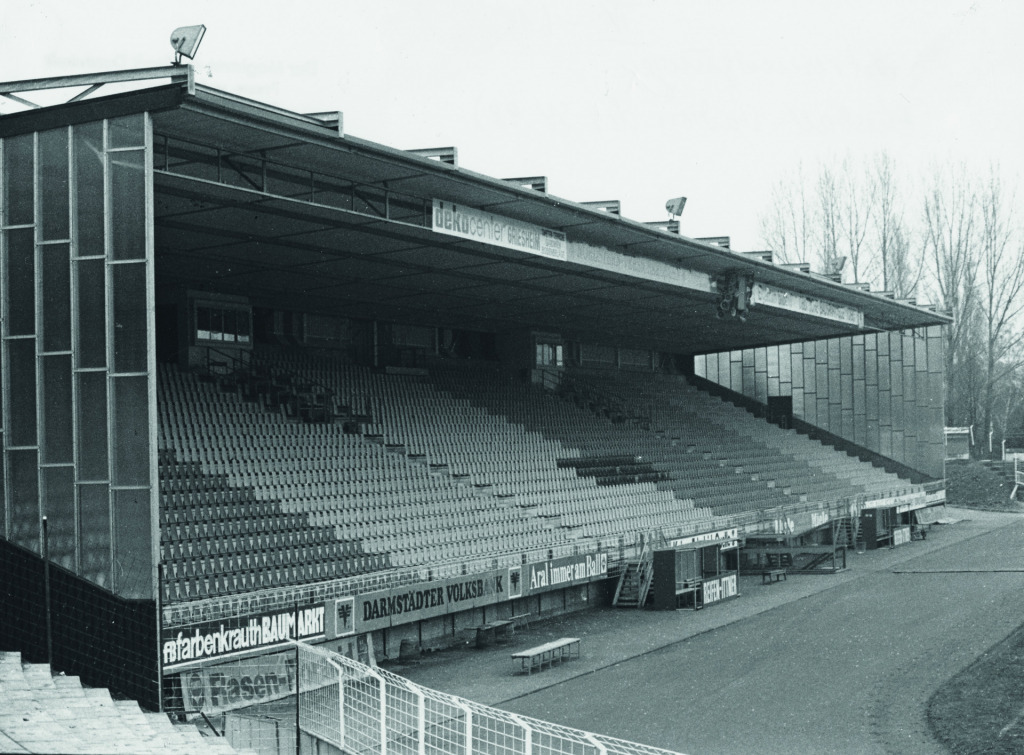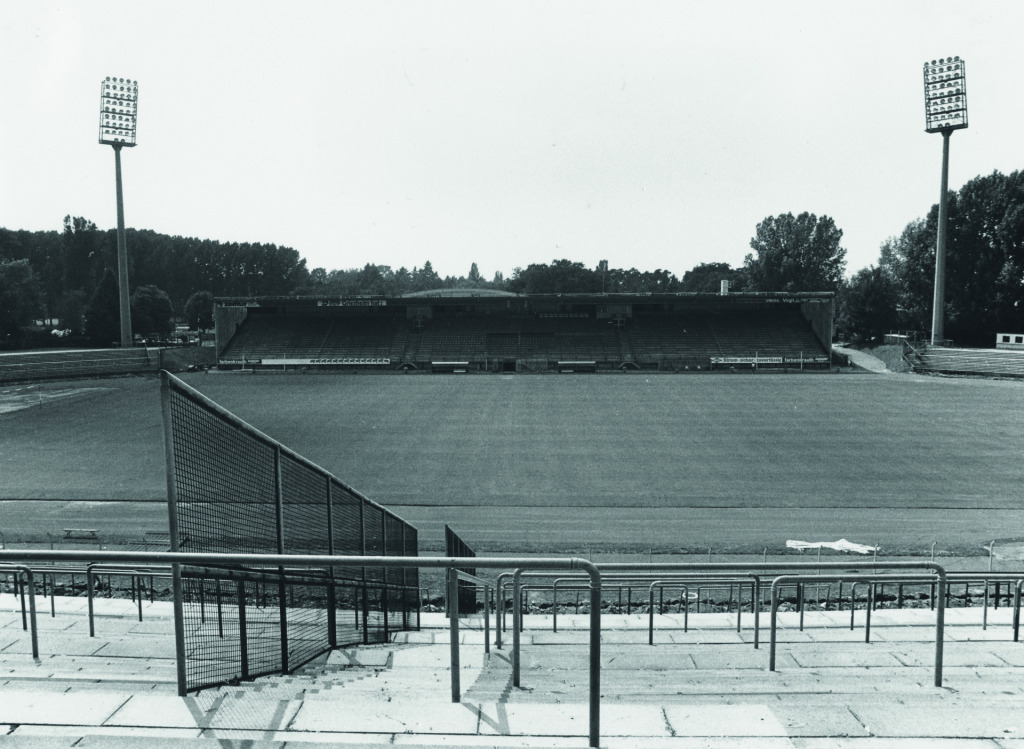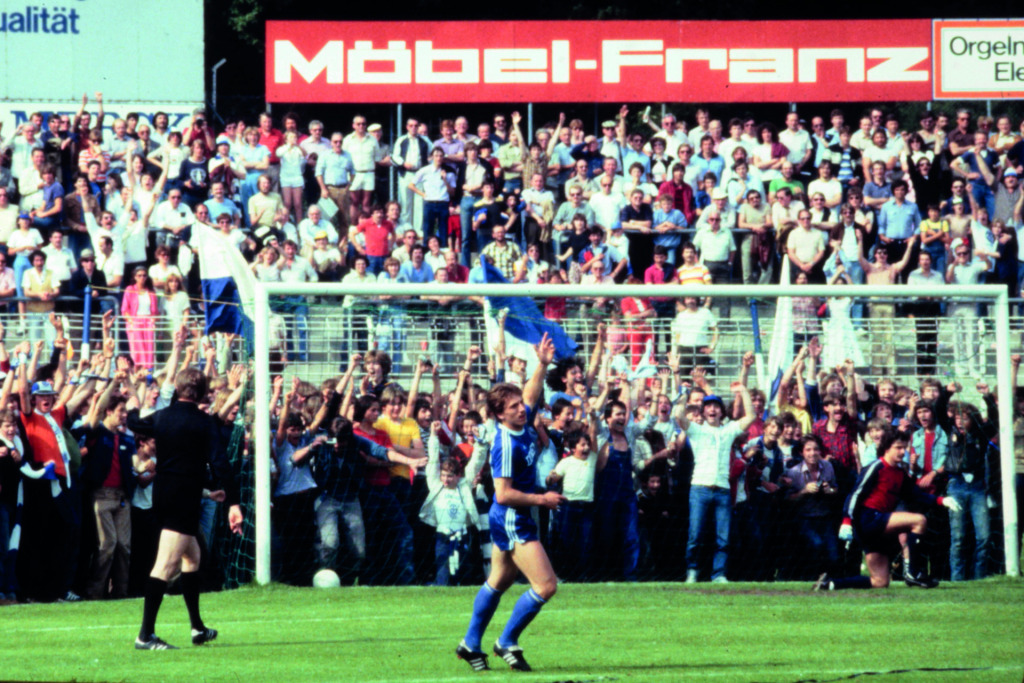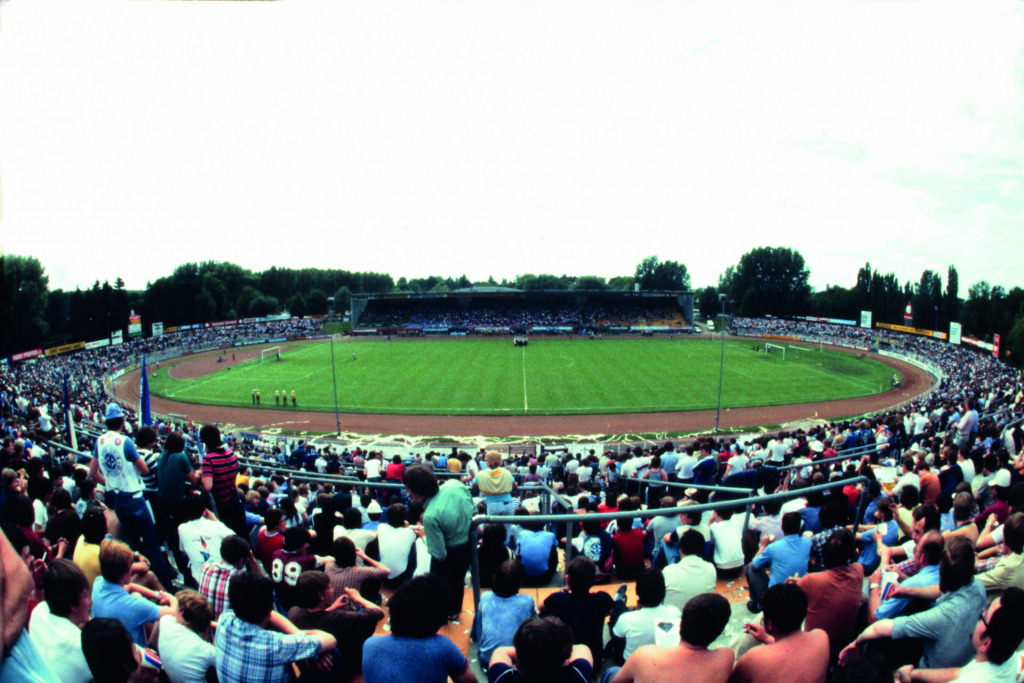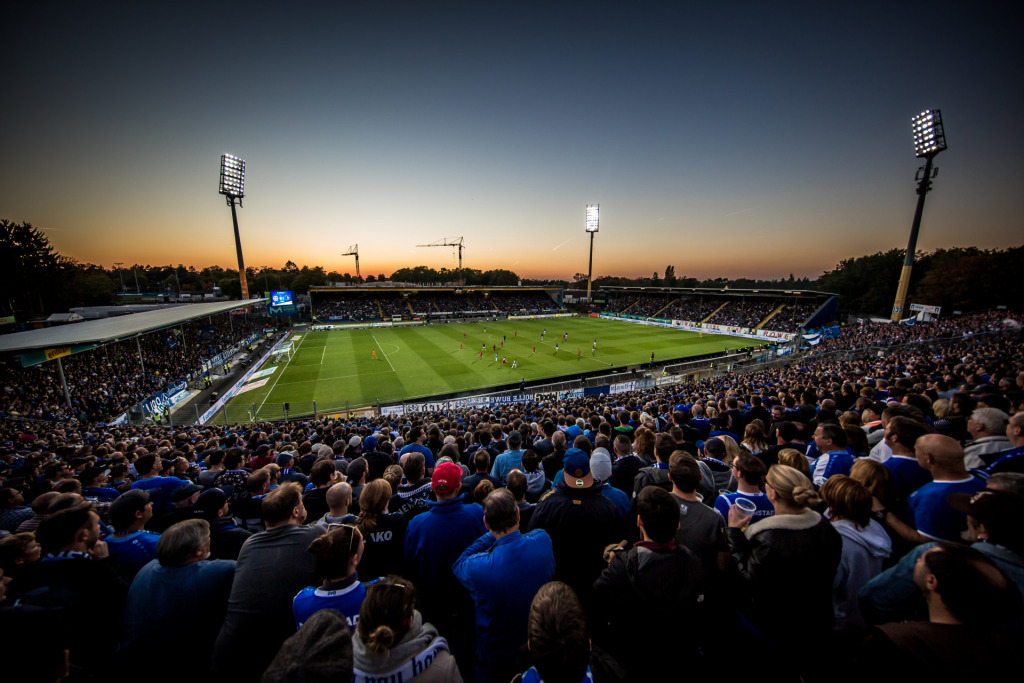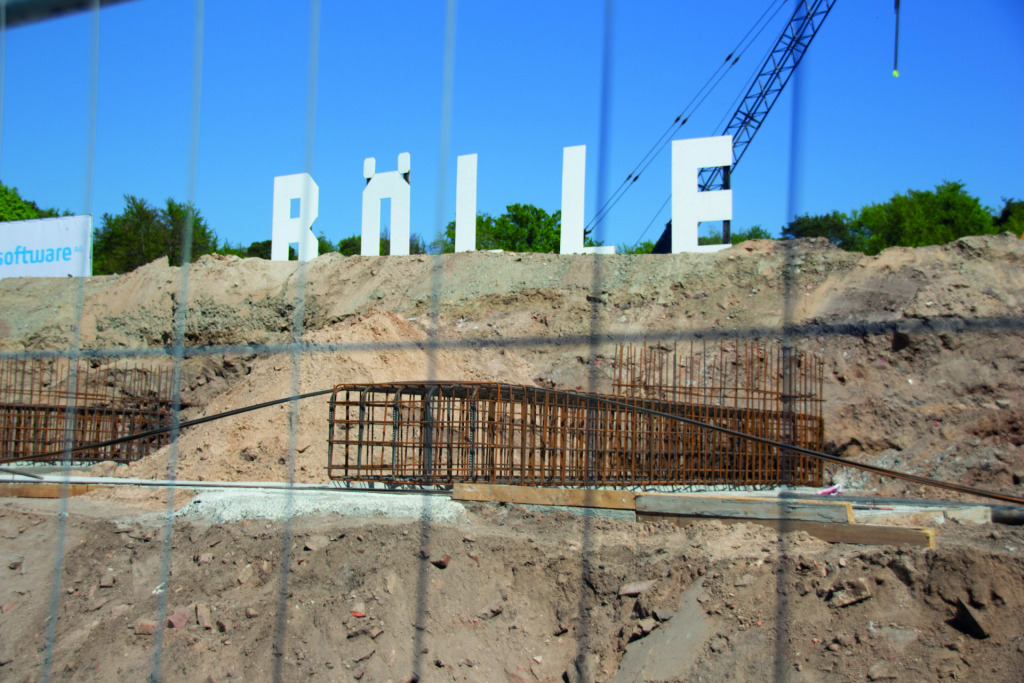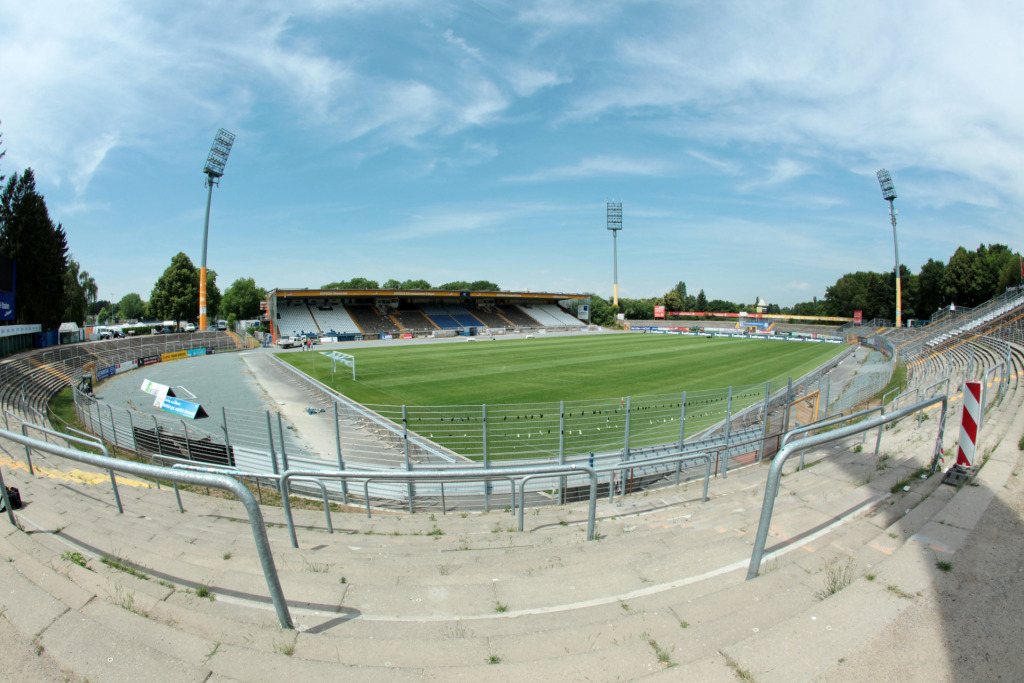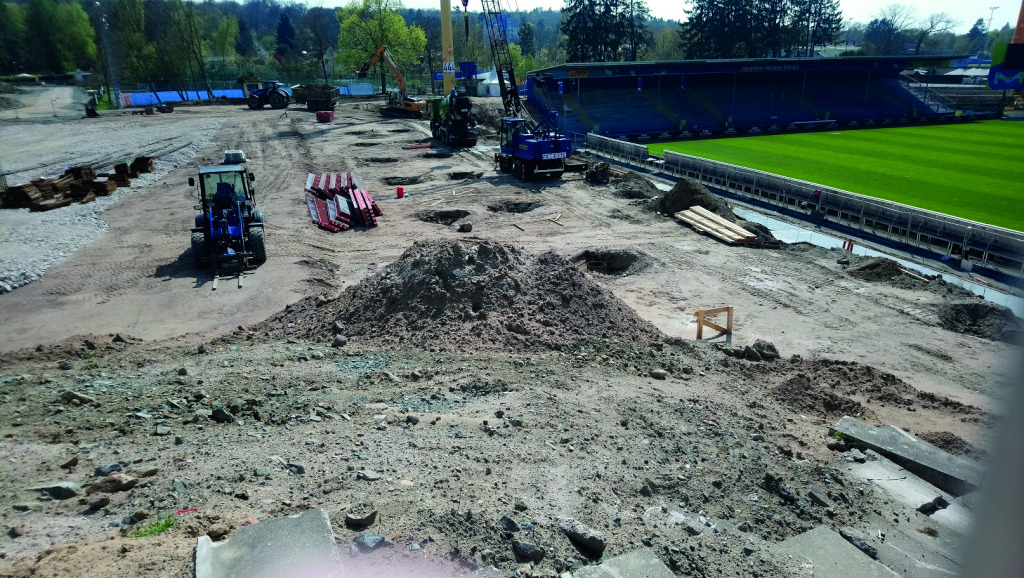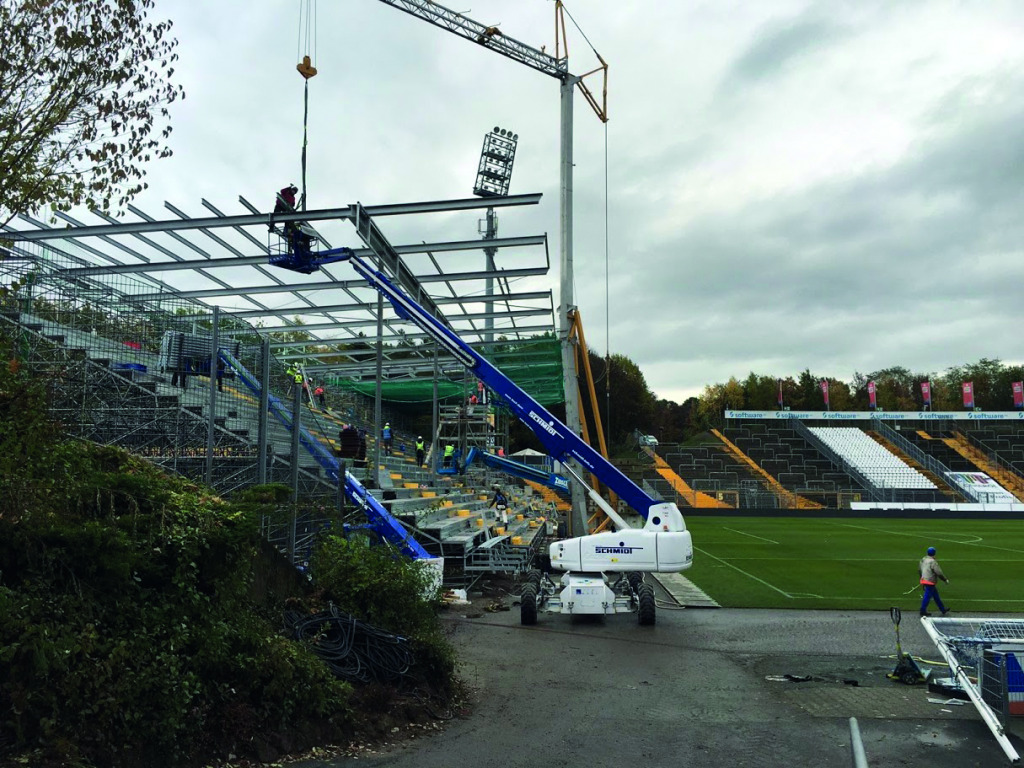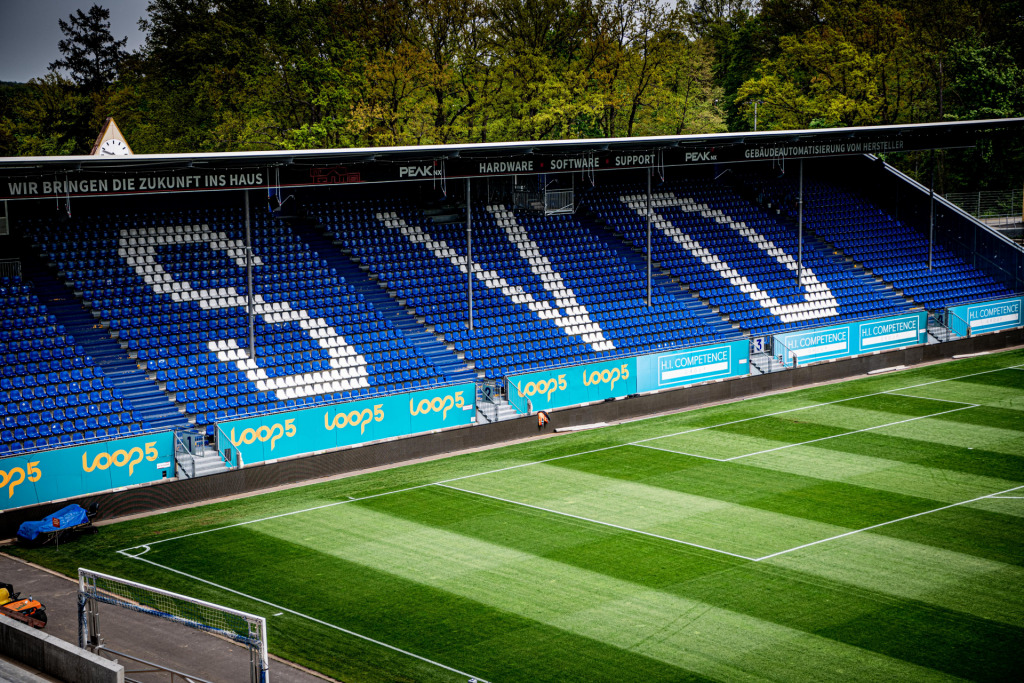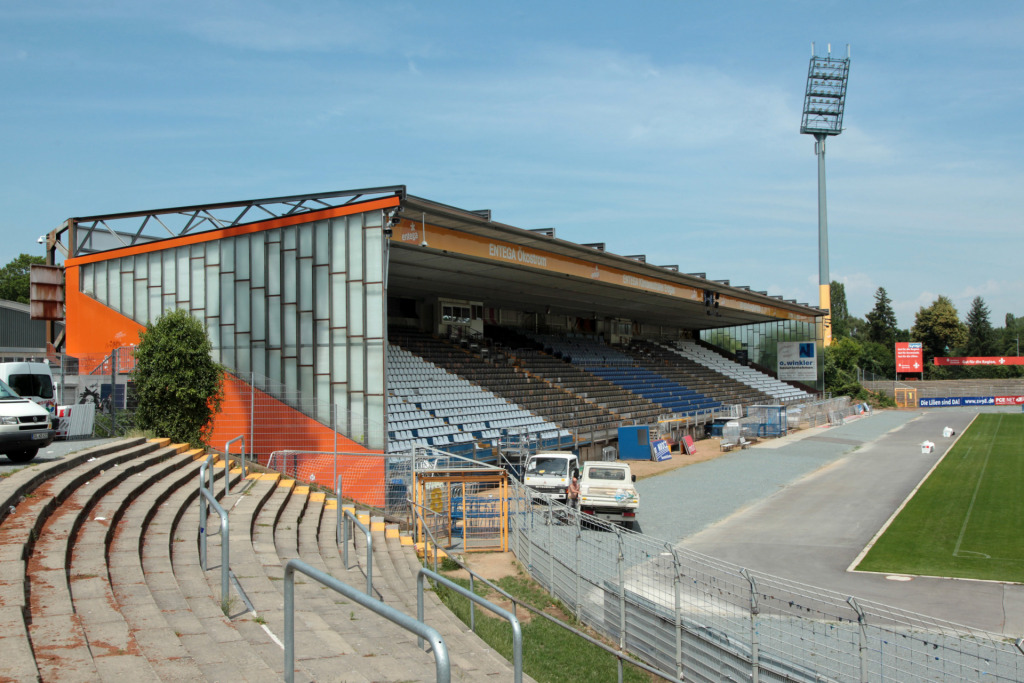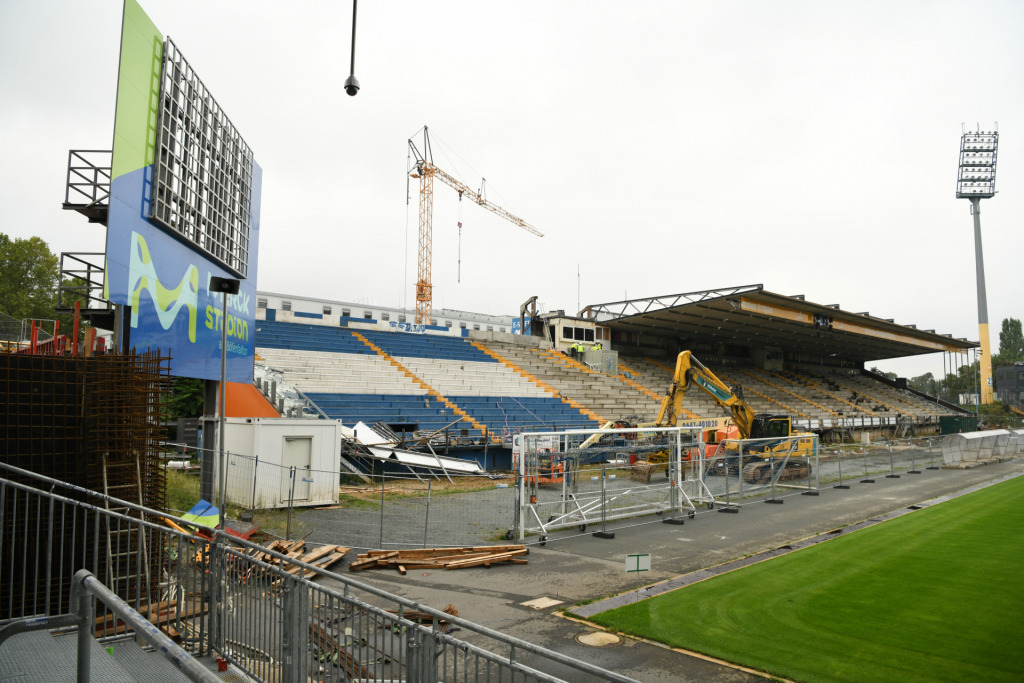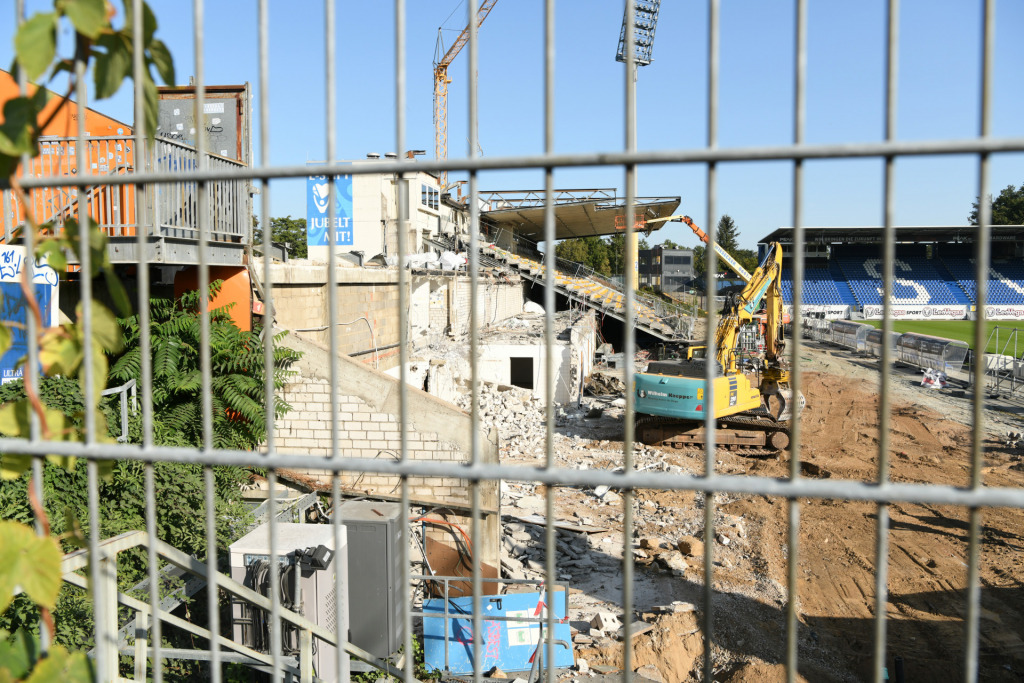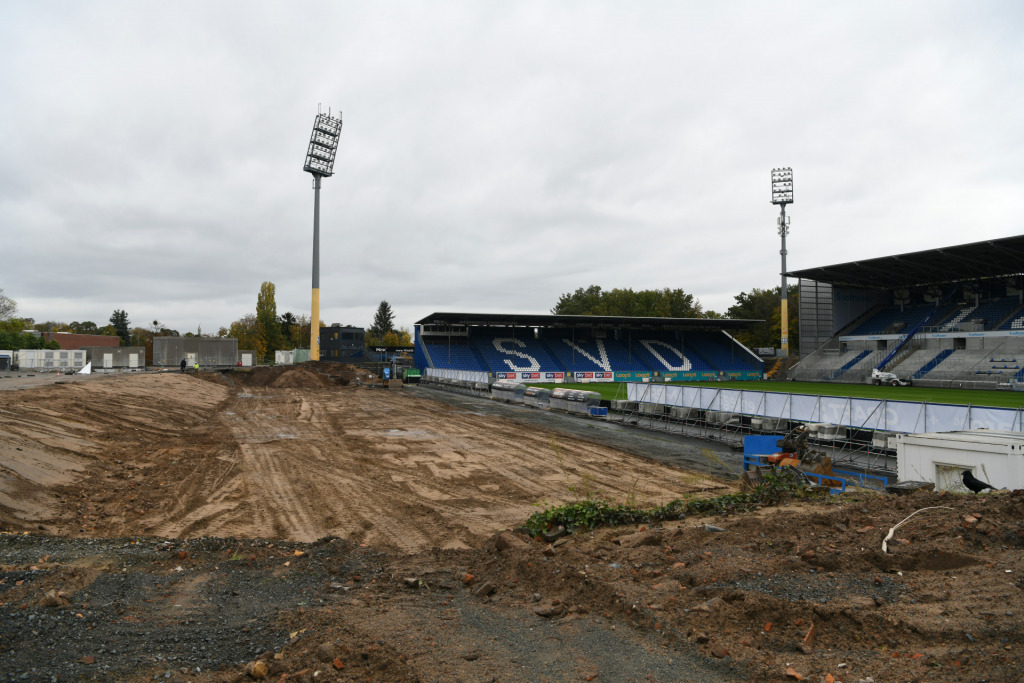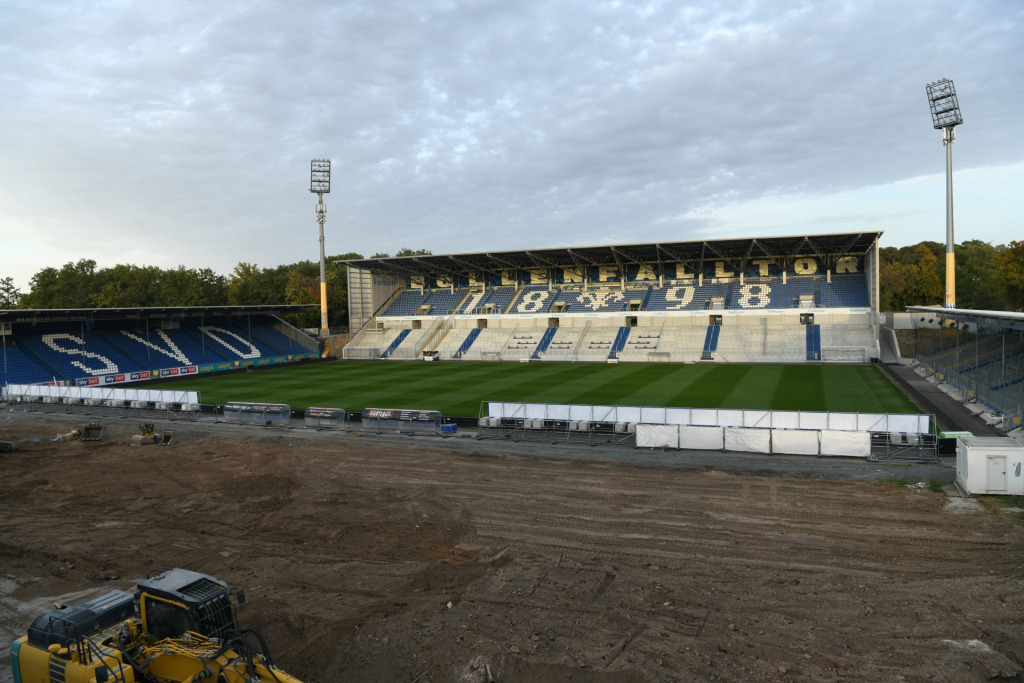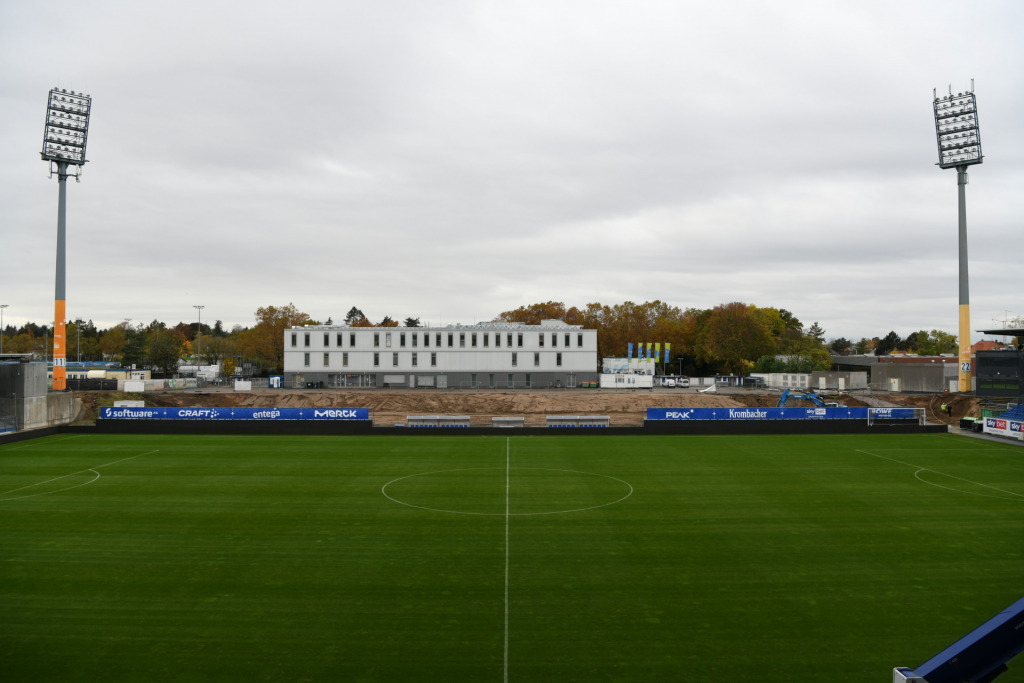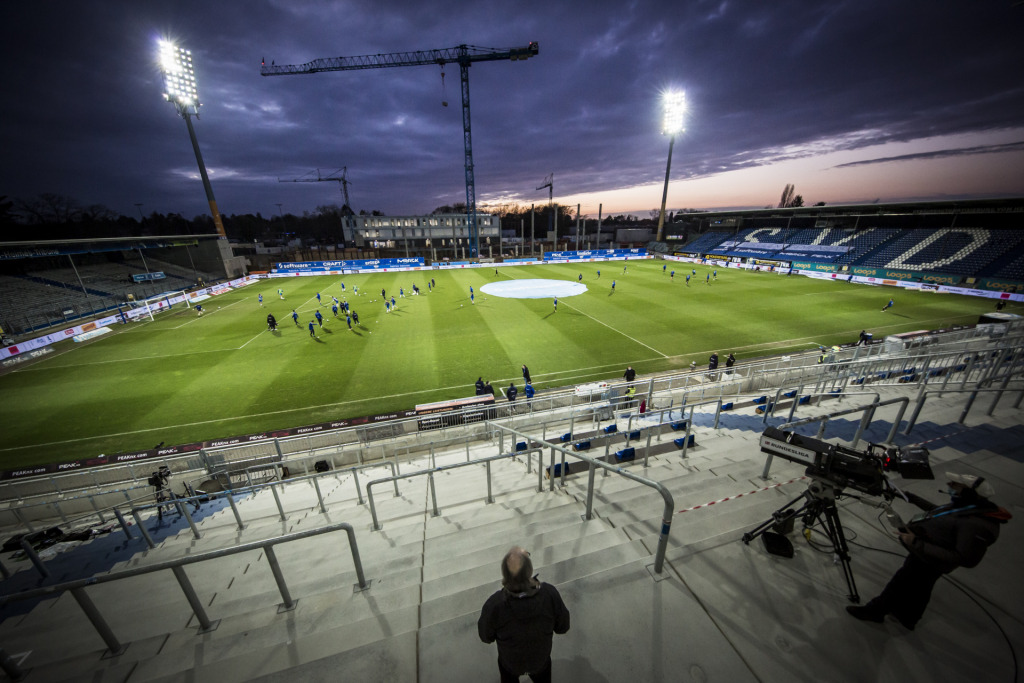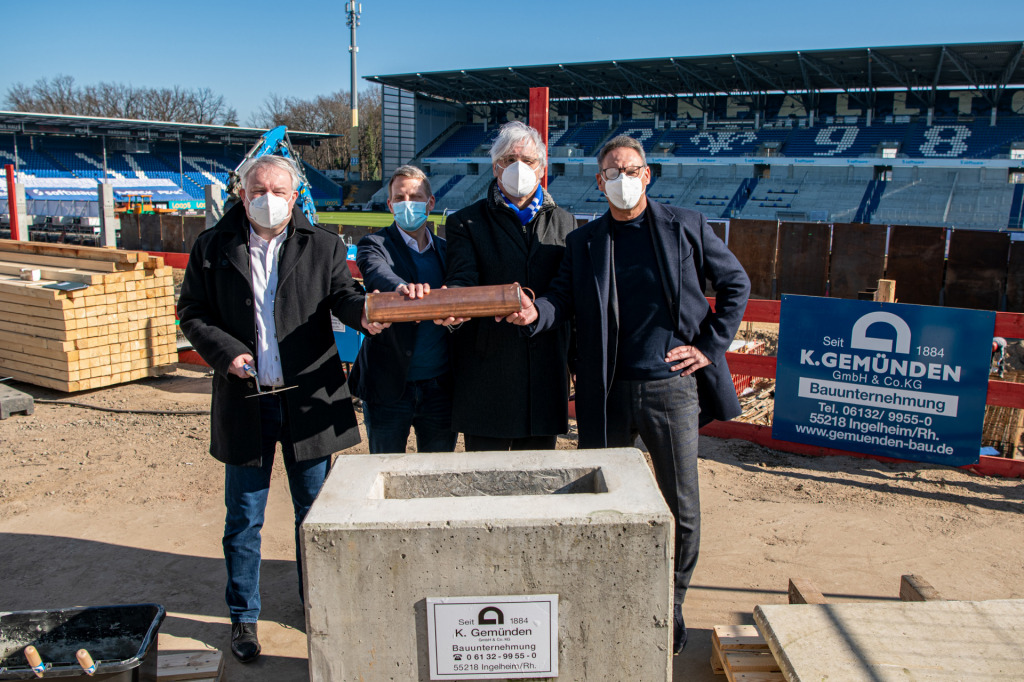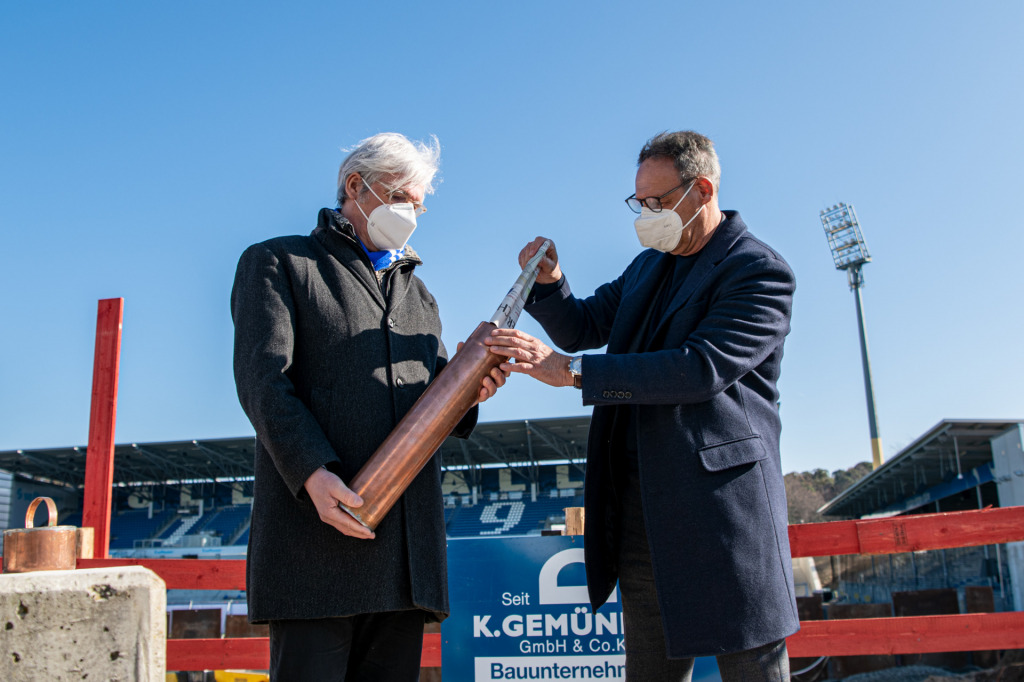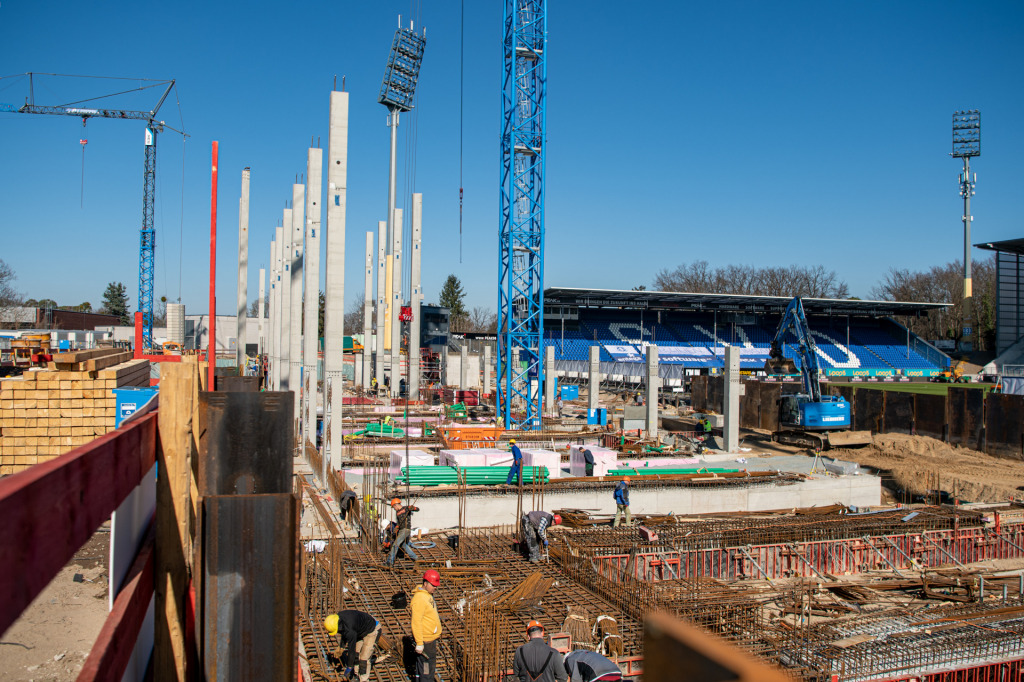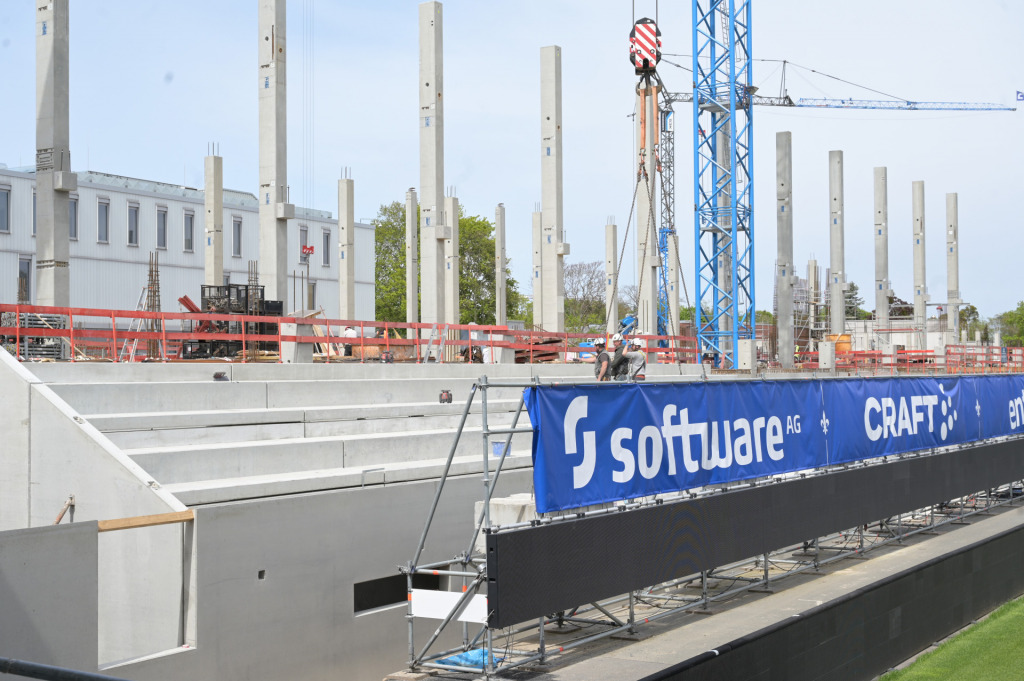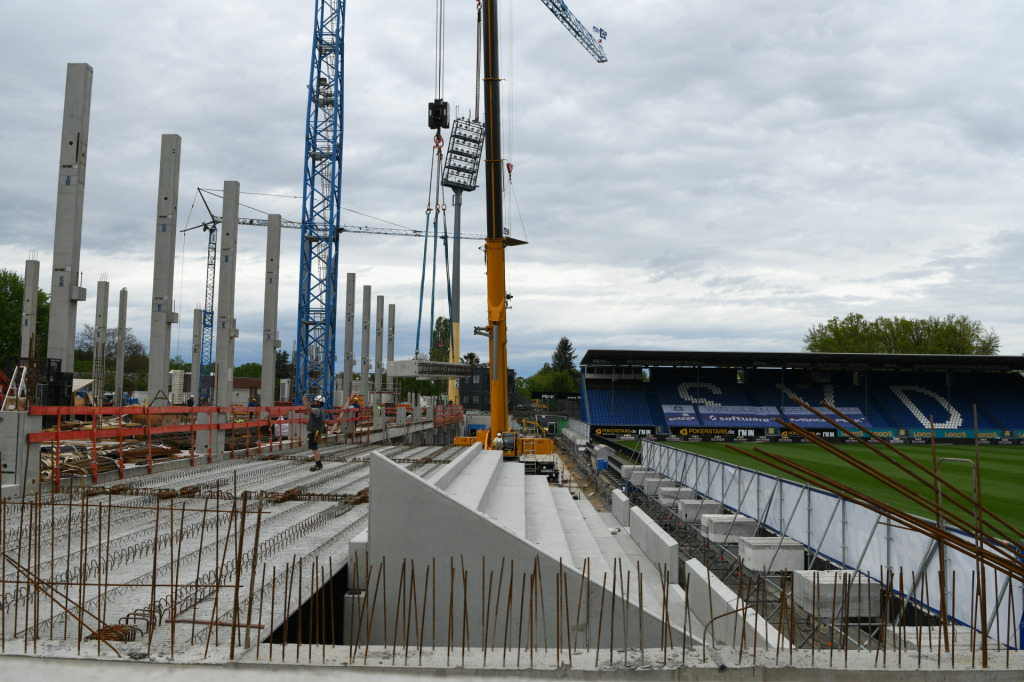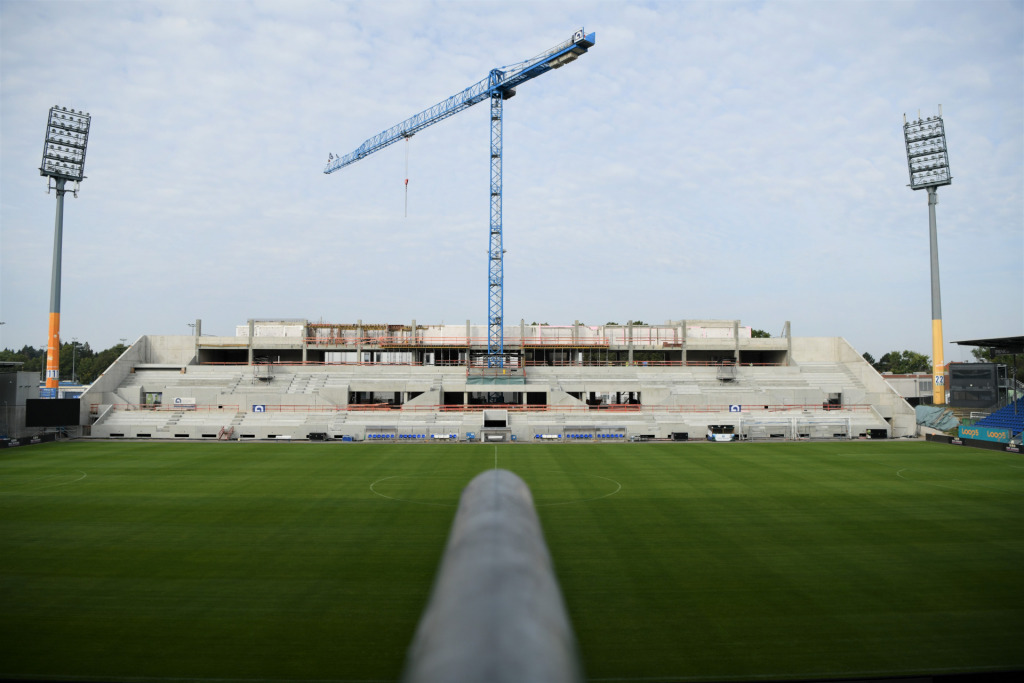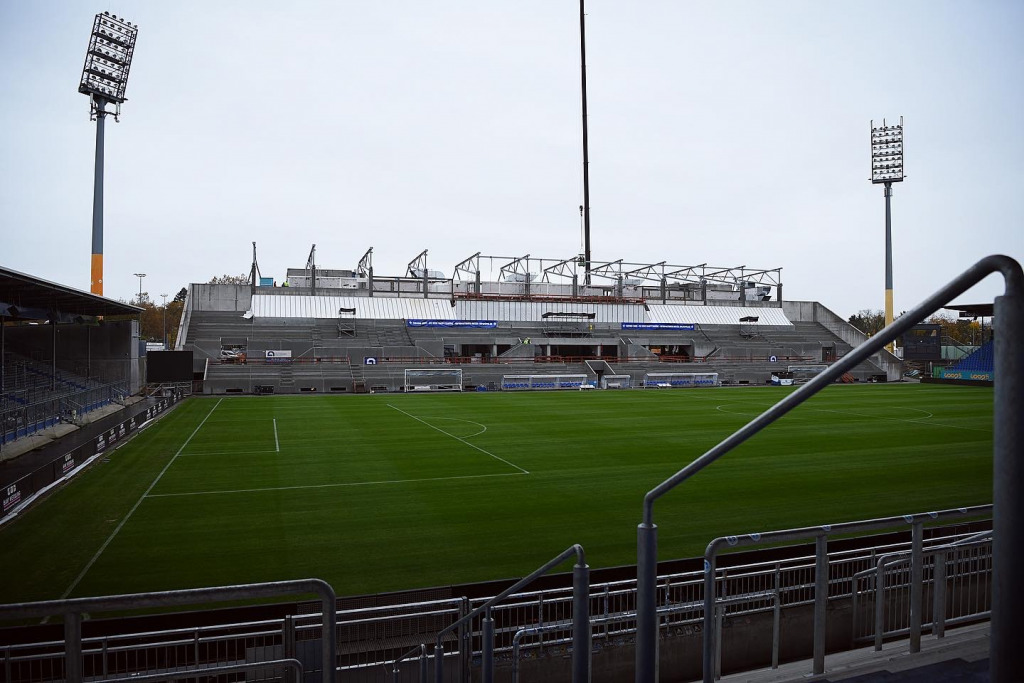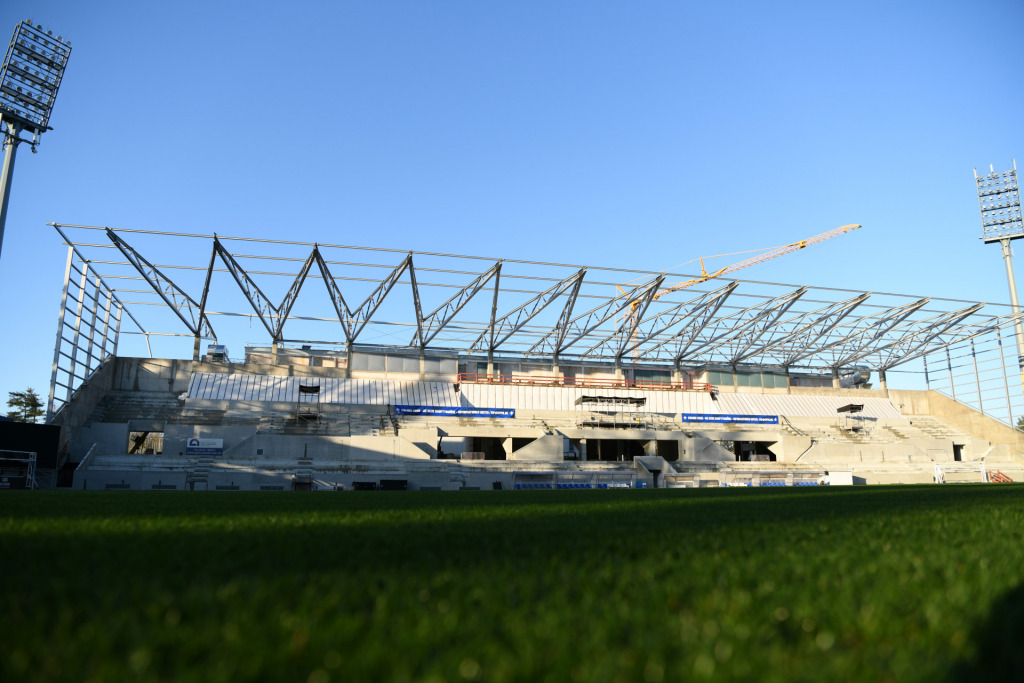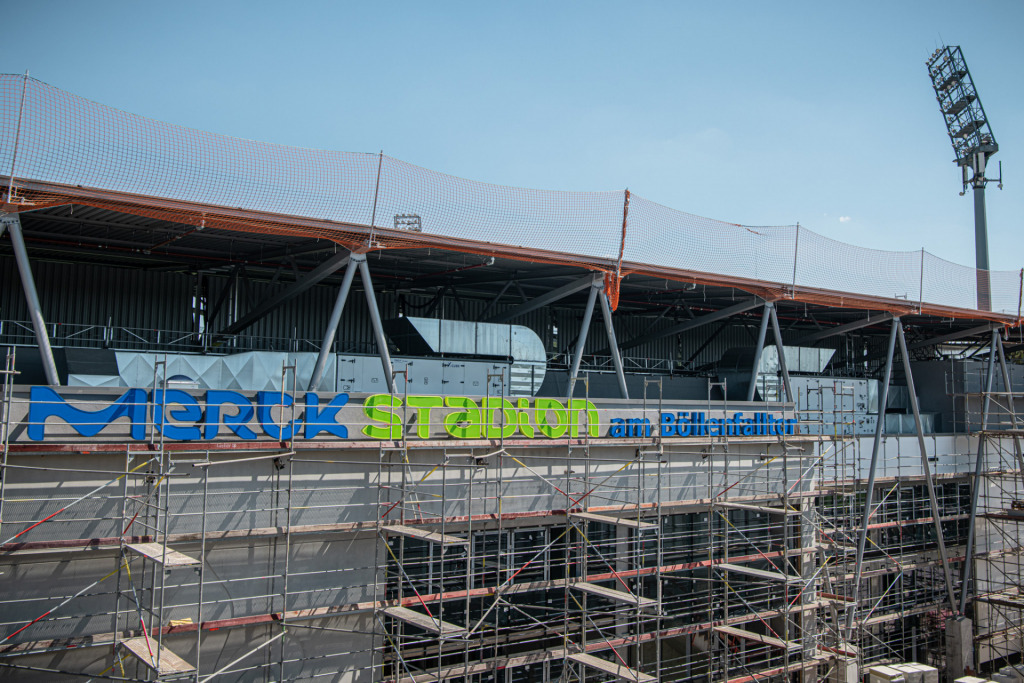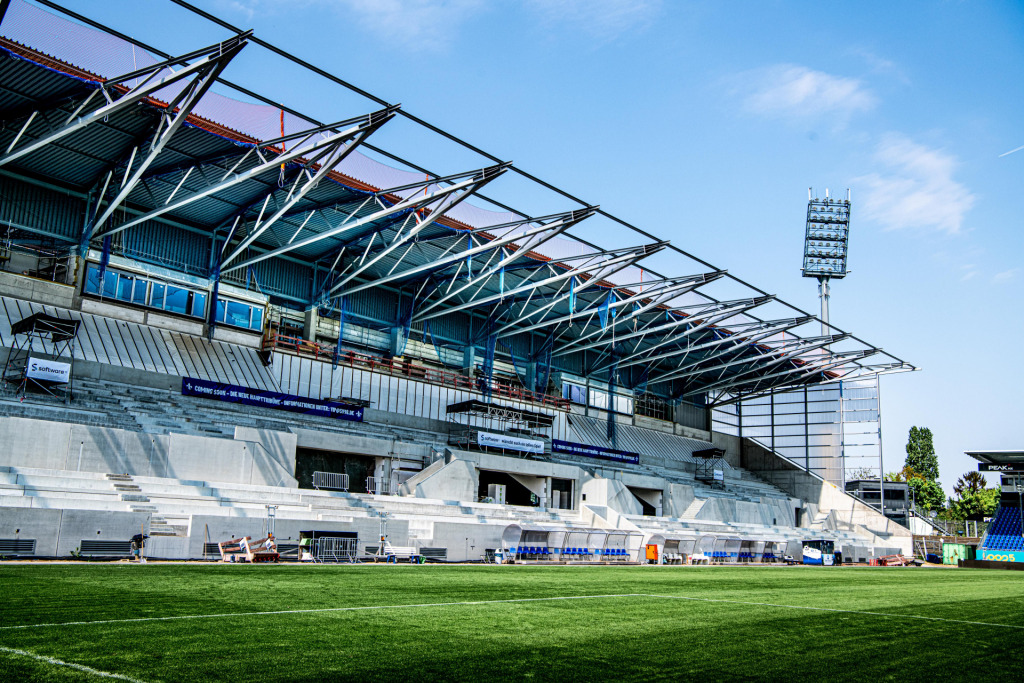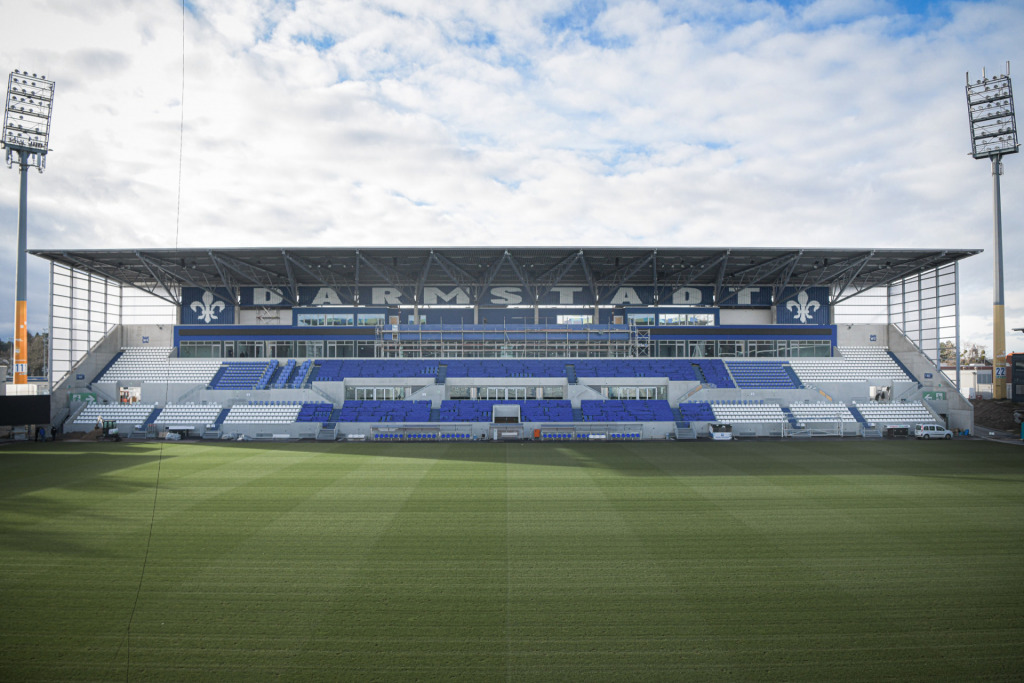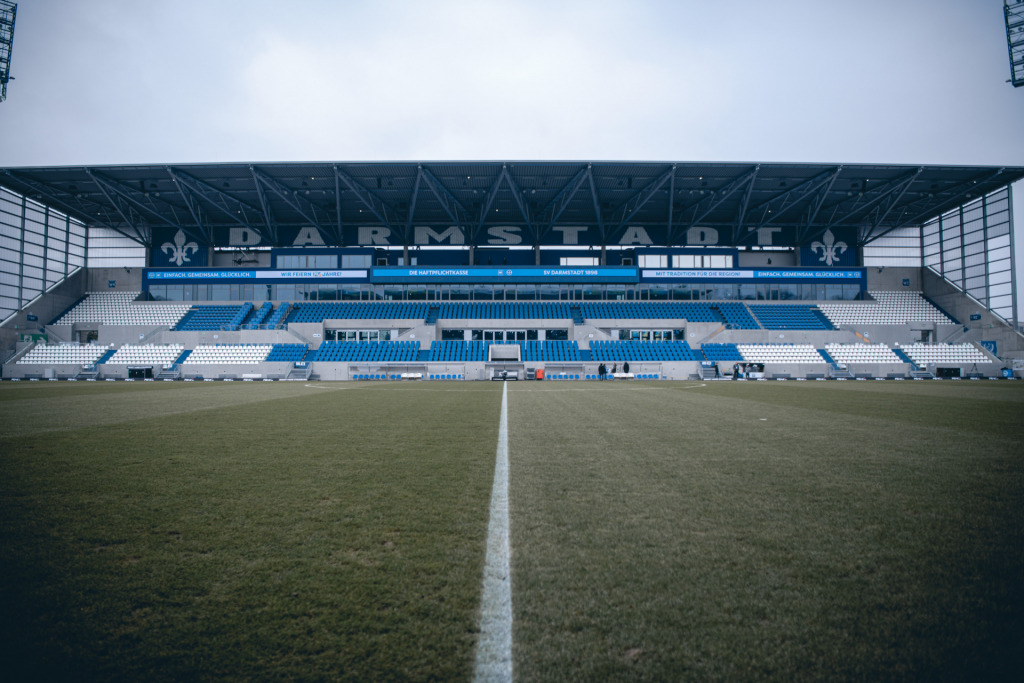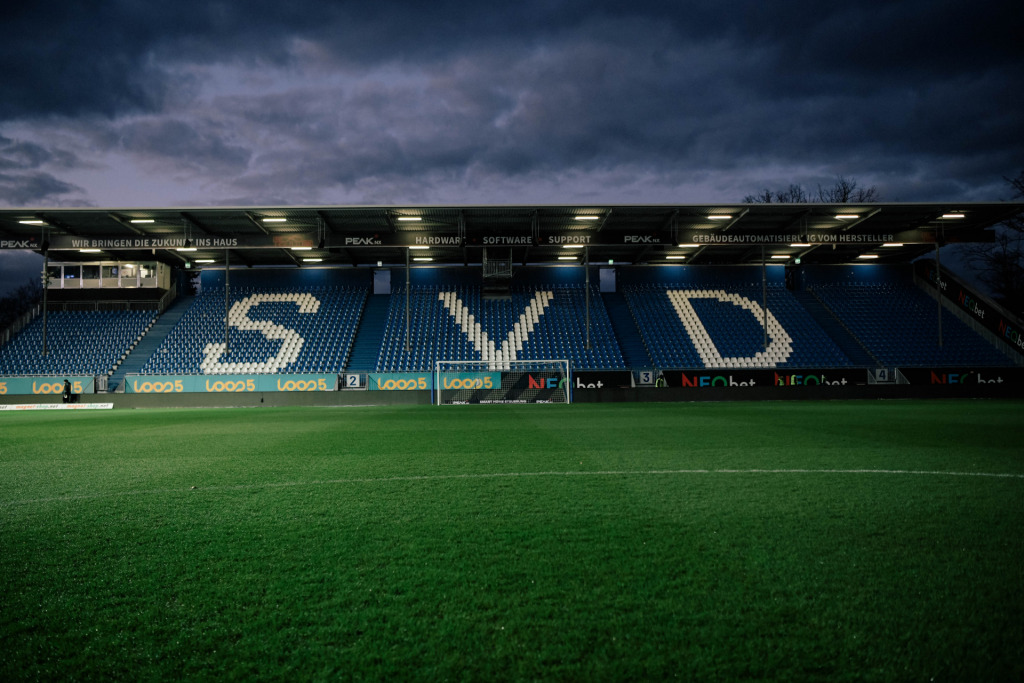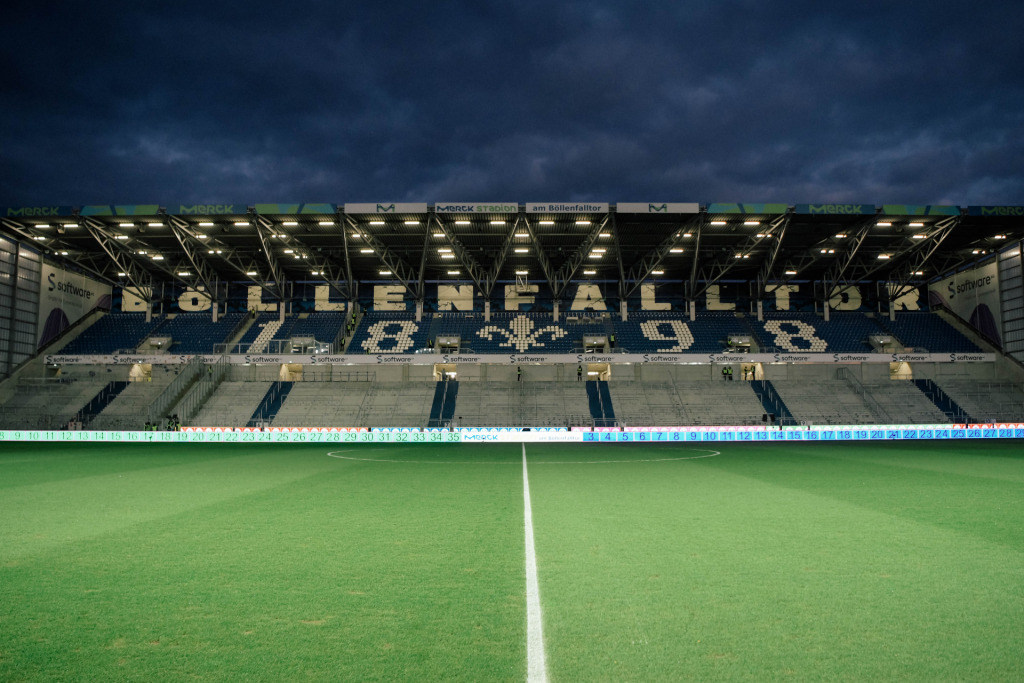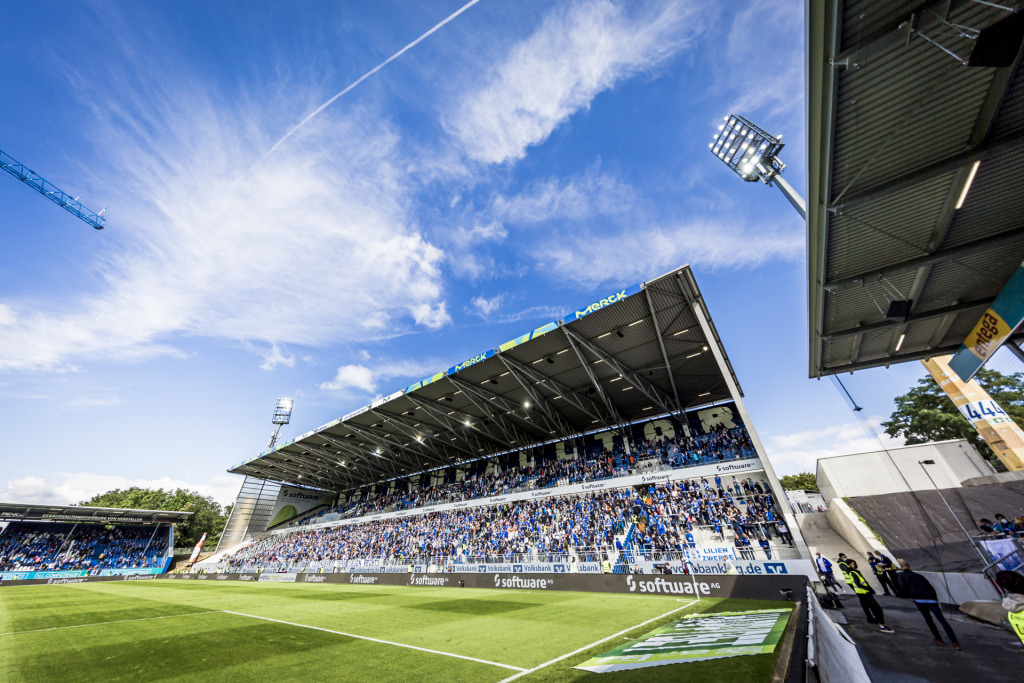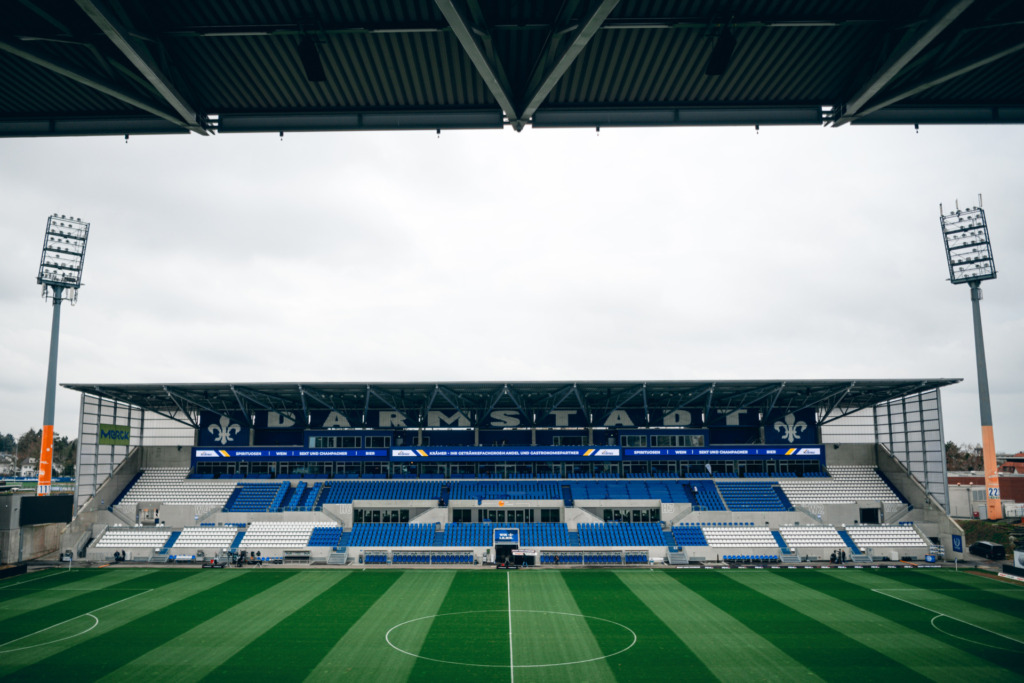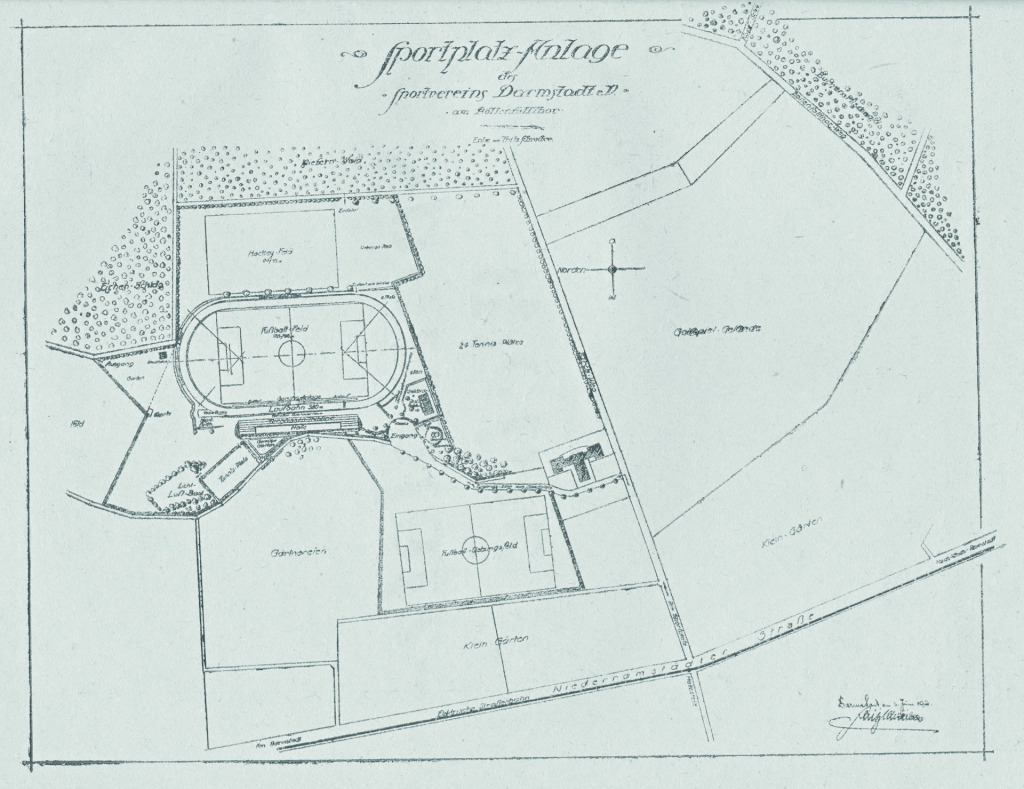
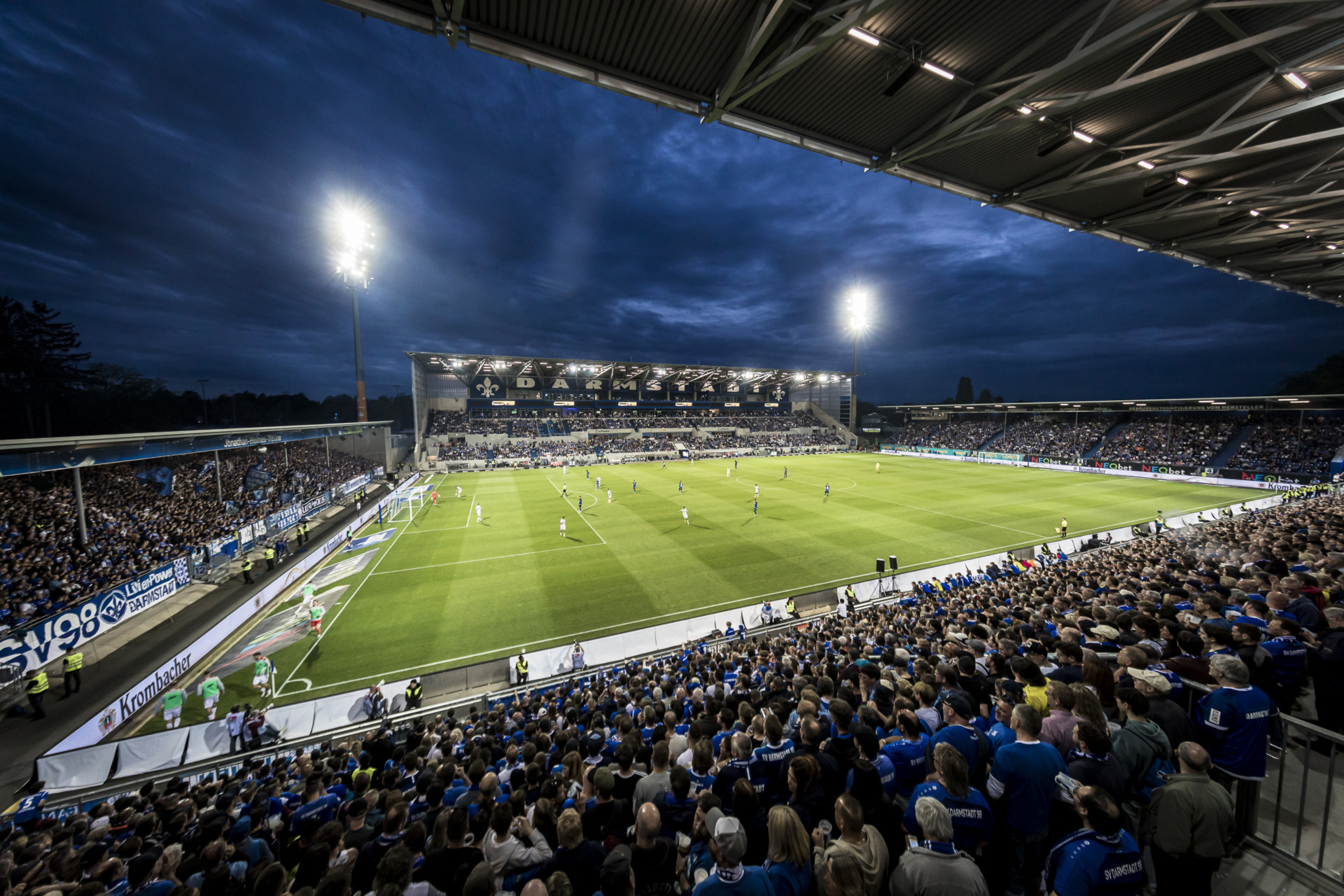
Stadium
Facts about Merck-Stadion am Böllenfalltor
Total capacity
The Merck Stadium at Böllenfalltor has a total construction capacity of 17,810 seats.
Main Stand: 2,982
Public: 1,544
Business area & boxes: 1,030 + 264
Media: 50
Wheelchair users (including accompanying persons): 94
North Stand
Seats: 2,792
South Stand
Standing room: 3,600
Back Straight: 6,730
Standing room: 4,670
Seats: 2,060
Guest block: 1,706*
Standing room: 862
Seats: 841
Wheelchair user: 3
*additional seats for away fans in the main stand (10 percent rule)
The Böllenfalltorstadion was named after poplar trees, the so-called “Böllen”, which grew on the way to Traisa during the time of the Grand Ducal Darmstadt. In the immediate vicinity of today’s stadium there was a city gate that closed the way to Traisa if necessary, hence the “trap gate” part.
A large number of poplar trees still decorate the northern edge of the stadium today. By order of the city council in 1920, these were not allowed to be felled, as the association took over the sponsorship of the trees at the time.
In July 2014, the science city of Darmstadt and the pharmaceutical and chemical company Merck agreed that Merck would acquire the naming rights for the municipal stadium at Böllenfalltor. In the 2014/15 and 2015/16 seasons, the Lilies played their home games in the “Merck Stadium at Böllenfalltor”.
In the 2016/17 season, Merck renounced its acquired naming rights in order to honor the life’s work of Jonathan Heimes and to support the non-profit organization „DUMUSSTKÄMPFEN“ for the benefit of children with cancer. Therefore, the home of the Lilies was “Jonathan-Heimes-Stadion am Böllenfalltor”. Since this season, SV 98 has been playing again in the Merck Stadium at the Böllenfalltor.
It was important to both the city of Darmstadt and the Merck company that the history of the sports facility was reflected in the new name. Therefore, “Am Böllenfalltor”, known far beyond Darmstadt’s borders, was retained as part of the stadium’s name. The agreement between Merck and the city was set for five years.
The Merck Stadium at Böllenfalltor has been owned by SV Darmstadt 98 again since the end of 2017. The operation and renovation – previously in the hands of the Science City of Darmstadt – is being carried out by the wholly owned subsidiary, SV Darmstadt 98 Stadion GmbH. In addition to the actual venue, the stadium area also includes three training pitches.
SV Darmstadt 1898 is run in the legal form of a registered club. Since 2017, there has been a wholly owned subsidiary, SV Darmstadt 98 Stadion GmbH, which is responsible for the operation and renovation of the Merck Stadium at Böllenfalltor.
Stadium history
Helvetia Frankfurt. That was his name. The first opponent that SV Darmstadt 98 met in the Böllenfalltorstadion. The game was played on July 24, 1921 – the 98ers won 4-1. But the event was much more important than the result: the official opening of the stadium as part of a sports week on the occasion of the 21st Association Day of the South German Football Association. More than 100 years later, the home of SV 98 is still at the location that was chosen as the Lilies‘ place of work. The traditional location of Böllenfalltor.
1920’s
When it opened in the 1920s, the stadium offered space for around 8,000 spectators and included a 380-meter-long cinder track. The playing field was 65 meters wide and 105 meters long. On the east side was the back straight with a ground terrace from which you could see the main field and the hockey field and the spectators stood next to and on top of each other. The north curve was at ground level. The south curve was at the level of the partially covered grandstand on the west side, which comprised six rows and was 80 meters long.
War and post-war period
From 1933 onwards, the complete restructuring of German sport began by bringing the clubs into line in order to give the National Socialist regime more influence in this socially important area. However, after the end of the war in May 1945, the stadium was no longer allowed to be used. It was only at the end of the 1940s that efforts were intensified to get the Böllenfalltorstadion back and be allowed to renovate it. After much effort, the stadium was returned for sporting use and rebuilt between 1950 and 1953. Although the stadium was put into operation in 1952, it was still missing the running track and the grandstand roof. It was installed and inaugurated in 1953. The grandstand was 90m long and the stadium could accommodate around 25,000 spectators.
Renovation
After not much was done in terms of infrastructure in the stadium itself in the 1960s, the Lilies had to do a lot in the following decade: In terms of sport, the 1970s were a successful time for SV 98. In order to participate in the Bundesliga, the club had to increase the stadium capacity during the 1978 summer break with an increase to DFB statutes of 30,000 spectators. In 1981, thanks to many great financial efforts, they were promoted back to the Bundesliga. A requirement from the DFB for promotion changed the look of the stadium to this day: the floodlight system was installed for 1.8 million marks. Today it is one of the stadium’s identifying features and one of the remaining parts of the old stadium in the converted Merck Stadium.
1990’s & 2000’s
The 1990’s were a thoroughly difficult time for the club. It was a decade of dwindling spectators, in which the Böllenfalltorstadion primarily functioned as a place of sporting disillusionment. In terms of infrastructure, there were almost no changes or work to the stadium. Even in the 2000s, the image of the Böllenfalltorstadion hardly changed at all. Simply installing a scoreboard and installing new seats ensured minimal interference with the overall appearance.
Comprehensive renovation of the existing stadium
The following decade was completely different: the development of the lilies in this decade was indescribable, and the changes on and around the Böllenfalltor were massive. With the sporting success, the conditions on site became more and more difficult and were subject to ever greater requirements. The North and South stands at the Böllenfalltor were inaugurated in October 2016 – the start of the extensive renovation of the existing stadium, which was completed in 2023. In December 2018, the starting signal was given for the demolition of the time-honored back straight, which was completed in February 2020 and has since risen impressively into the Darmstadt sky.
The new construction of the main stand marked the completion of the extensive renovation of the existing building. The official laying of the foundation stone took place in March 2021, and the grandstand was fully operational for the first time in spring 2023. What was once an old and dilapidated arena has been transformed into a structure that now includes 19 boxes and around 900 business seats and offers the best conditions for sports in the catacombs. In addition, the roofs of the main stand back straight will be equipped with a photovoltaic system to supply energy. Step by step, a contemporary stadium with a modern functional building and training pitches was created from a dilapidated location. The Böllenfalltor location was given a makeover without losing its history and tradition.
